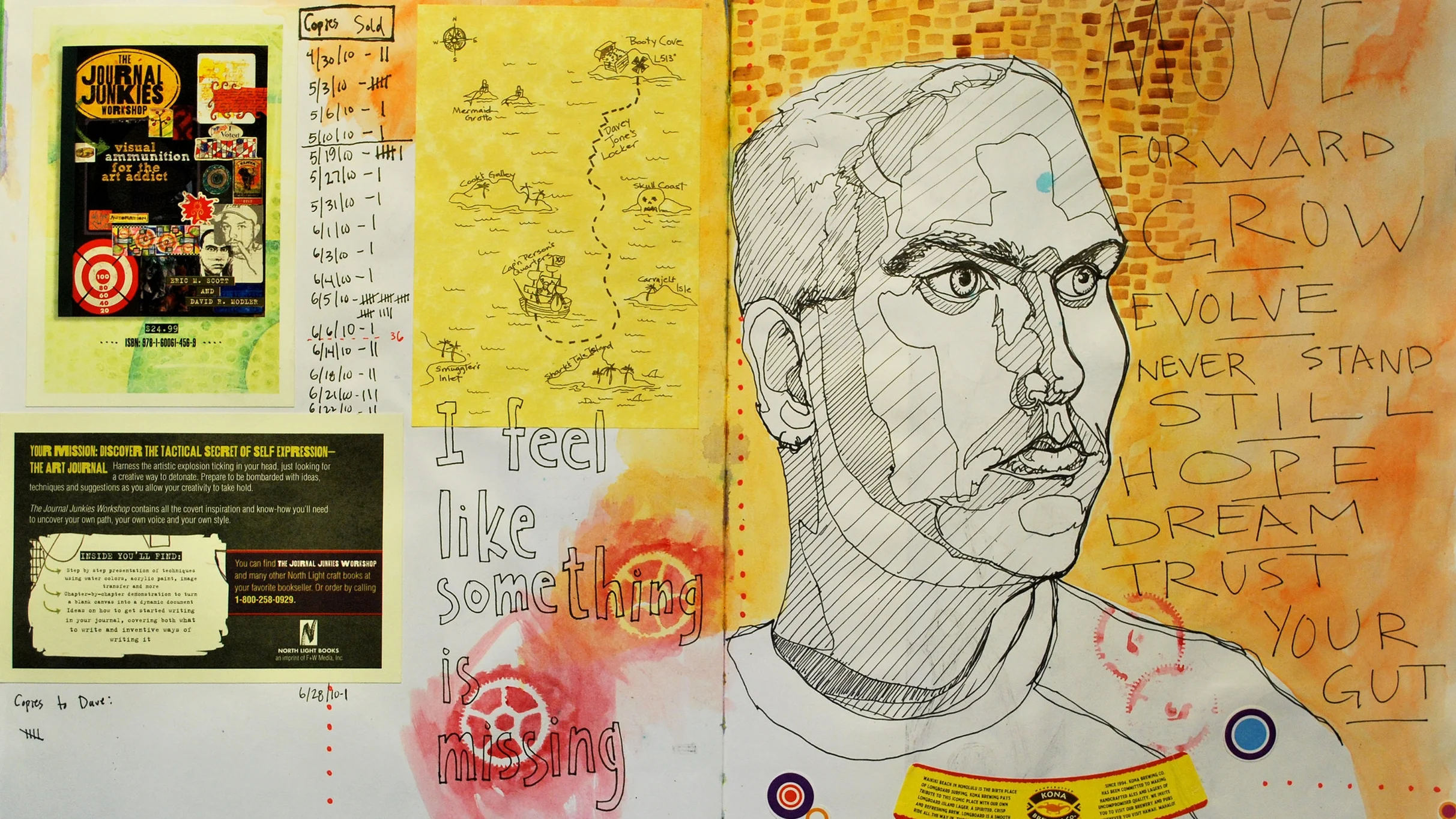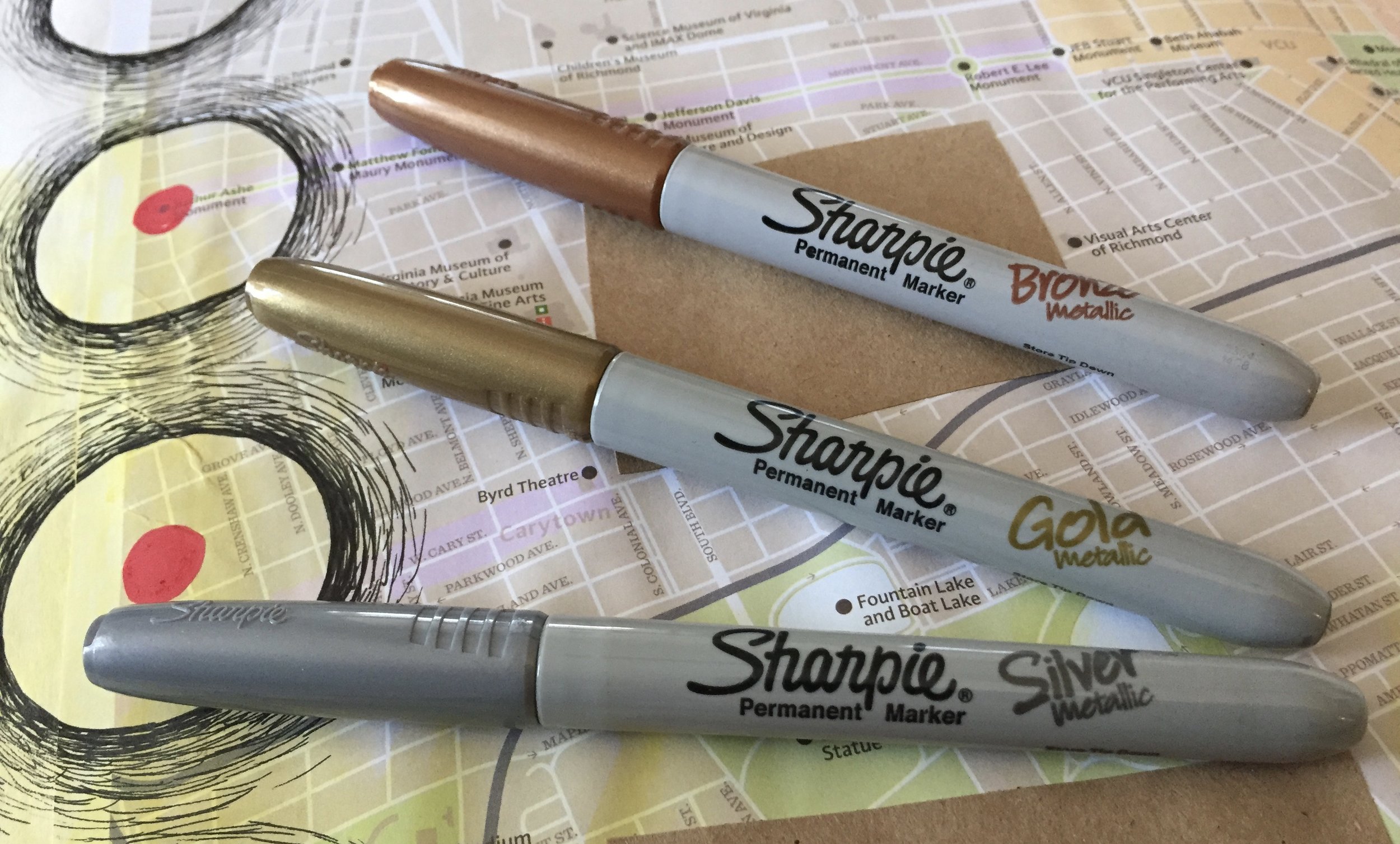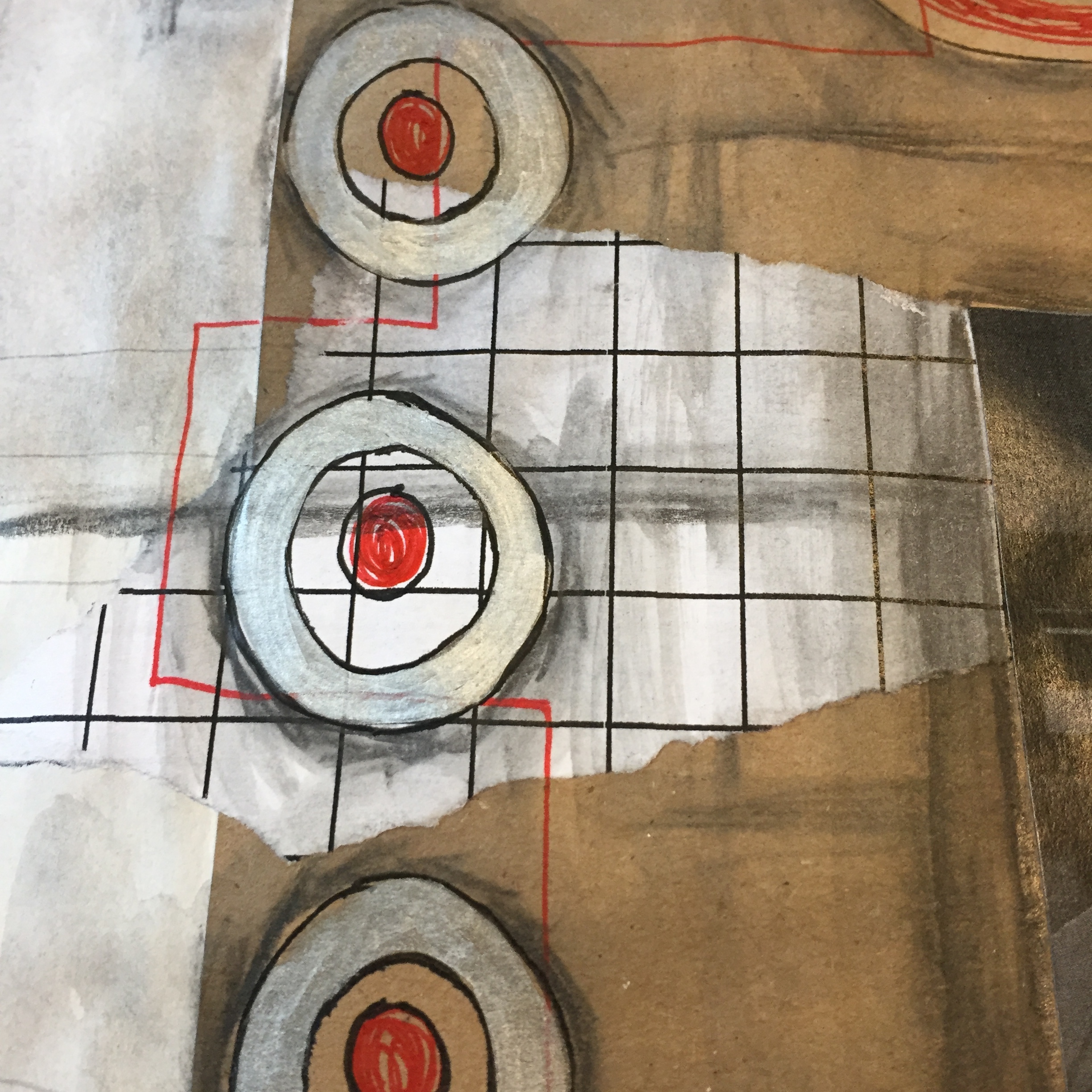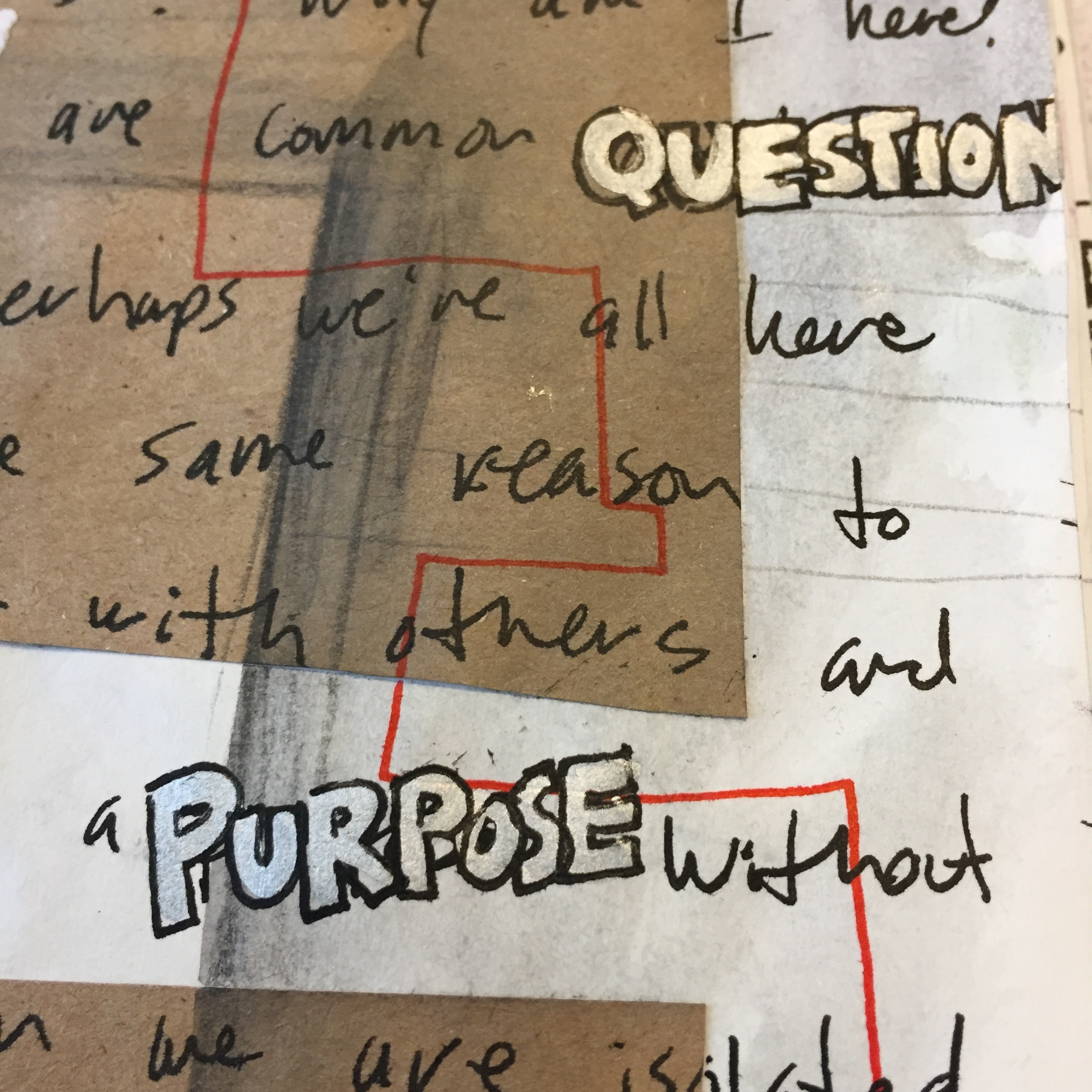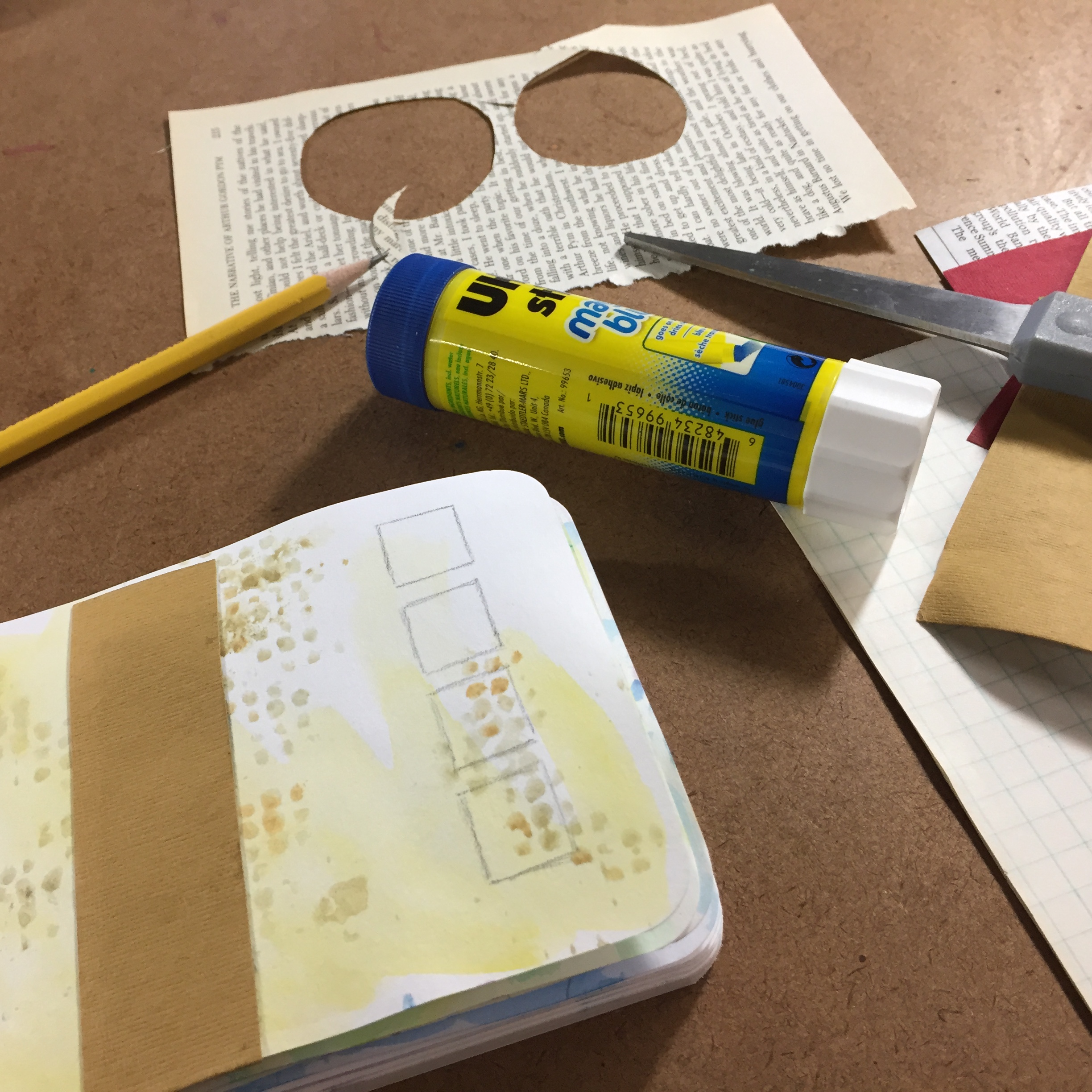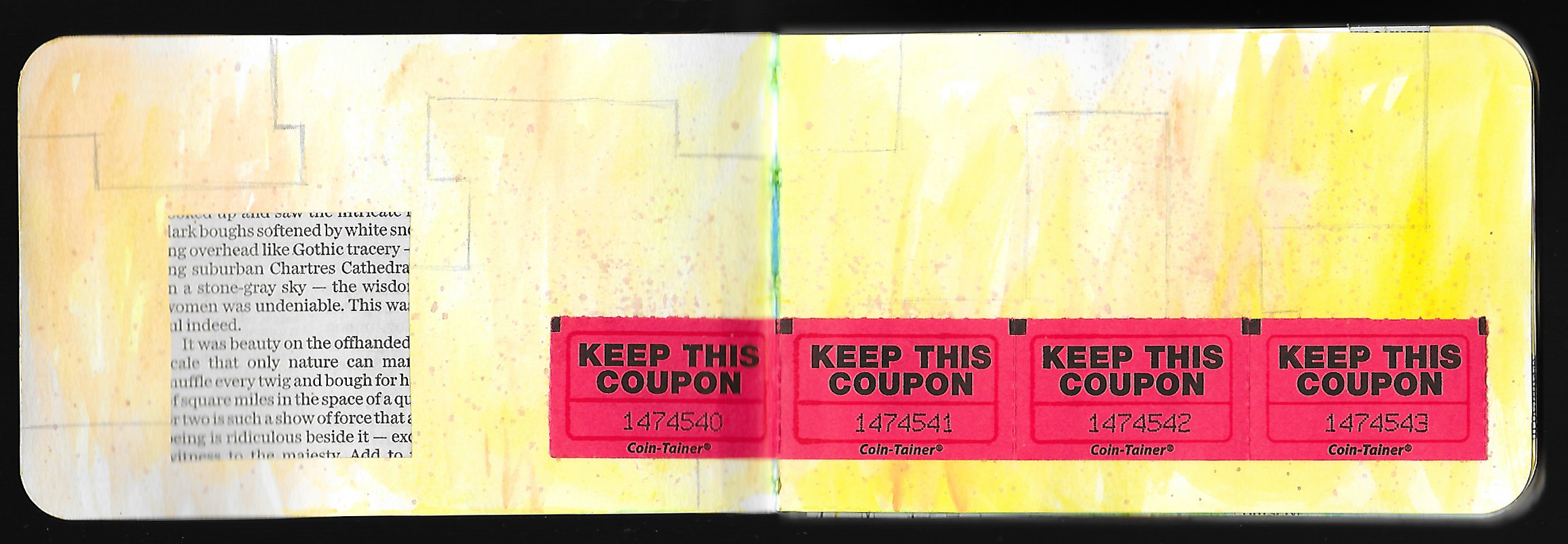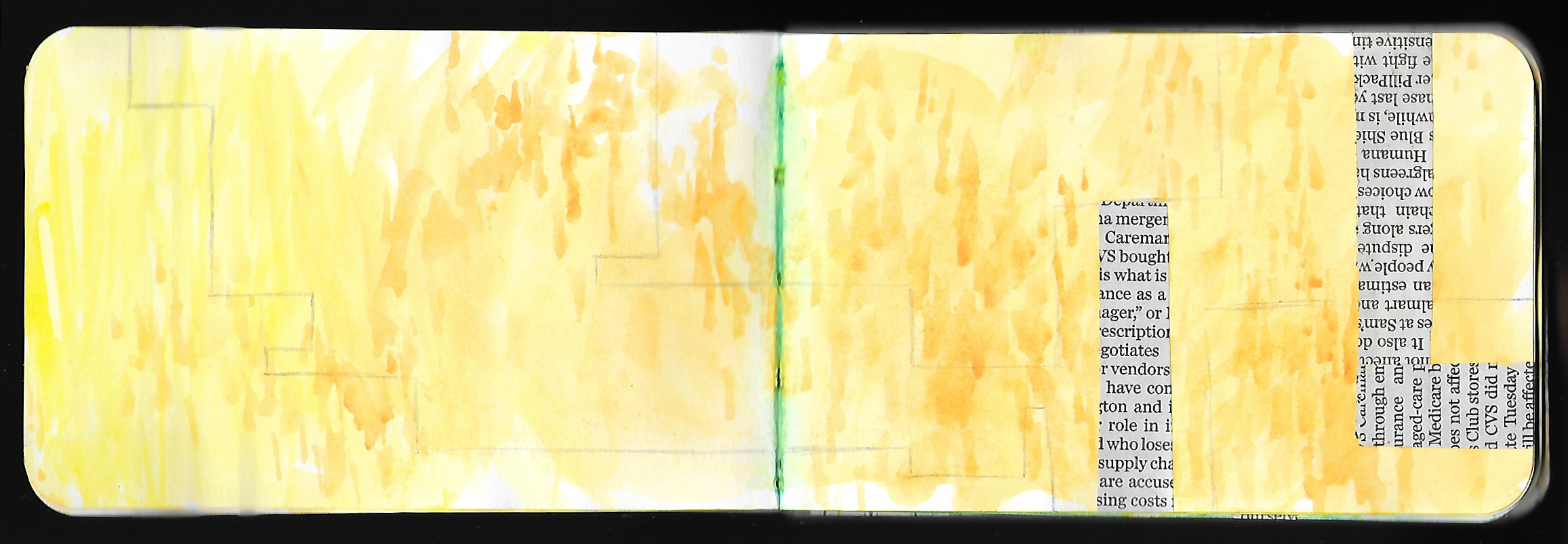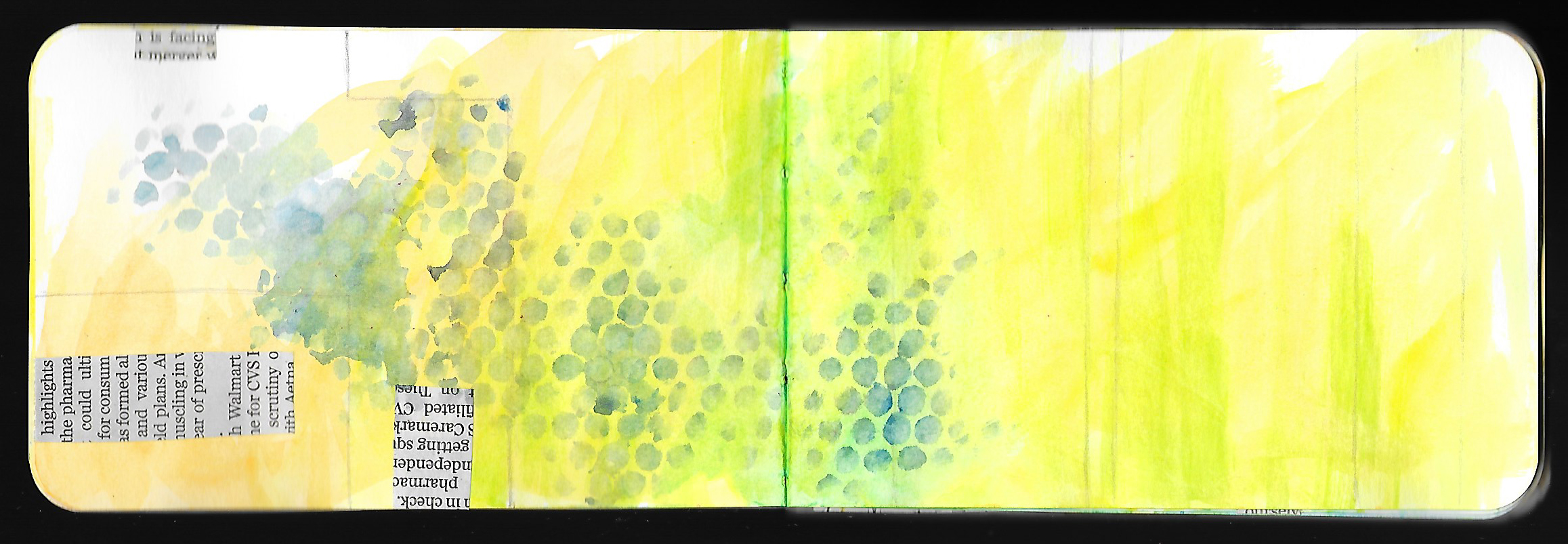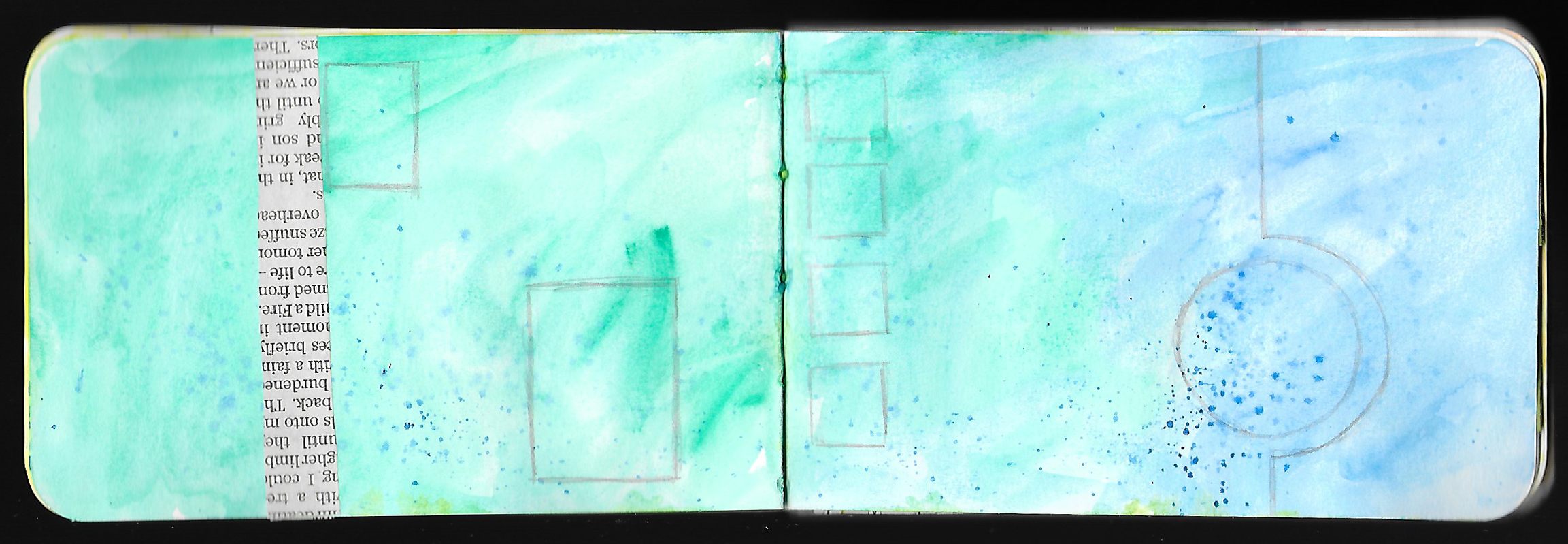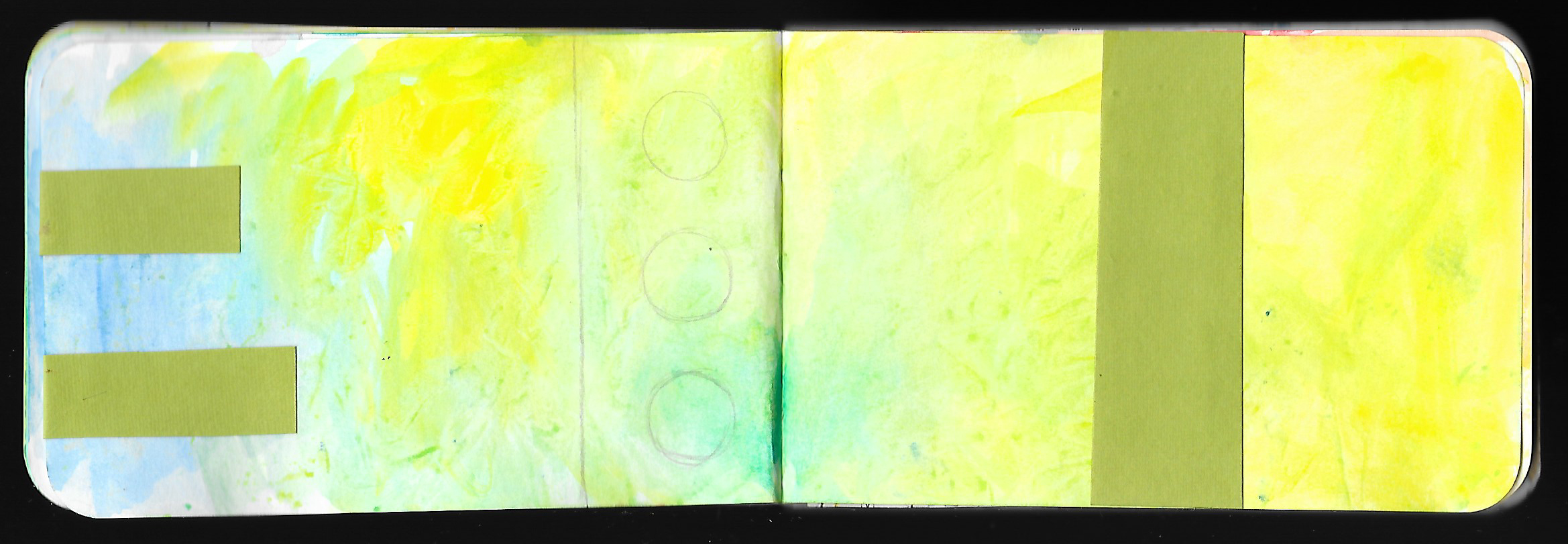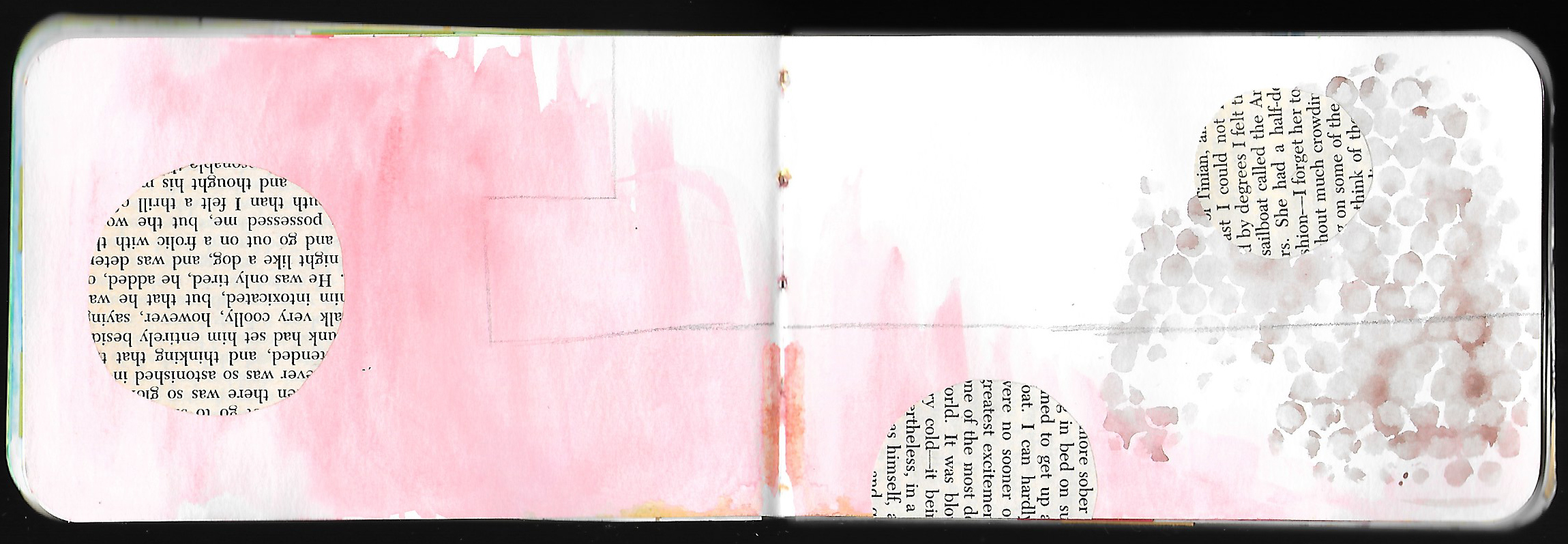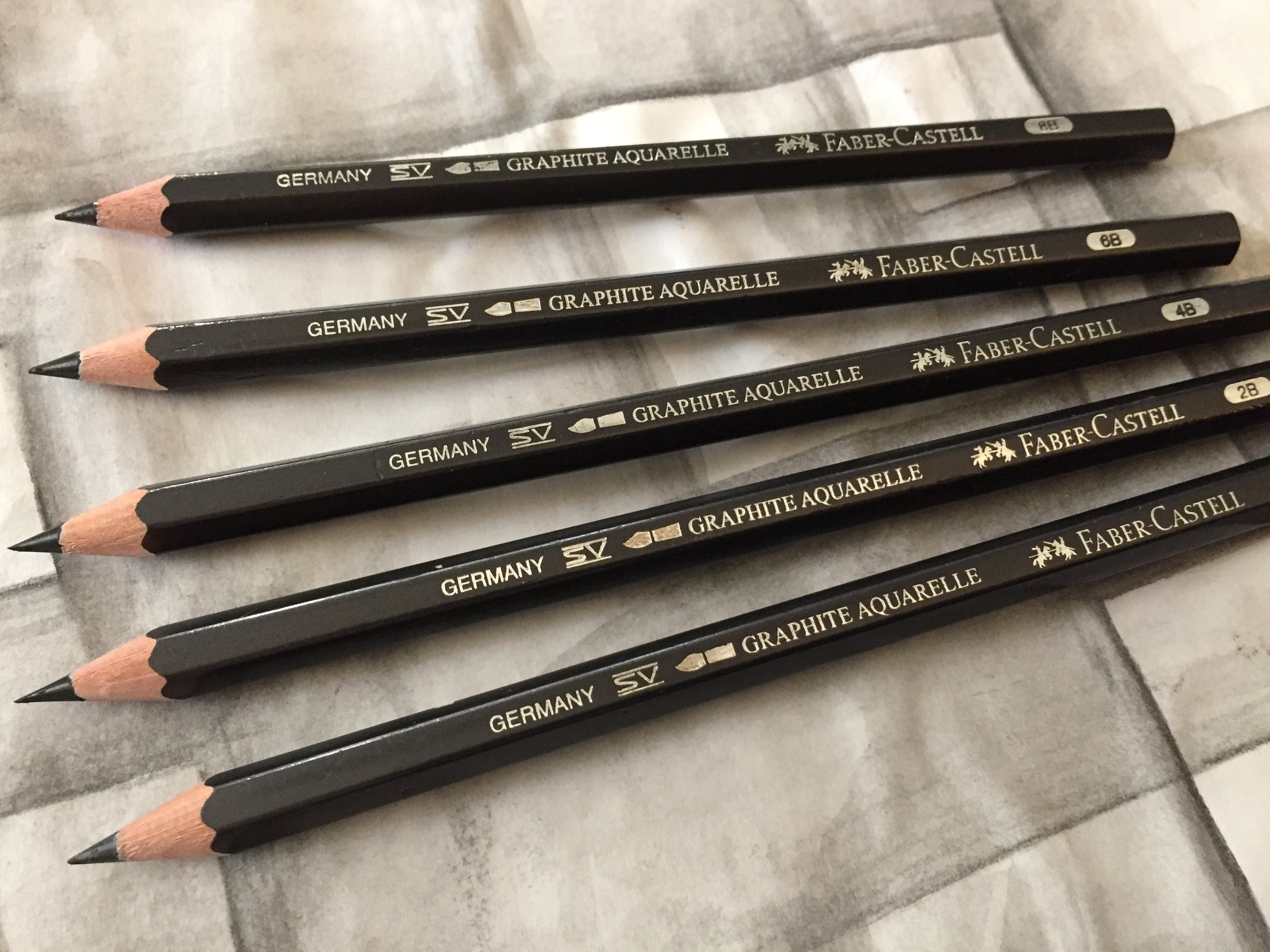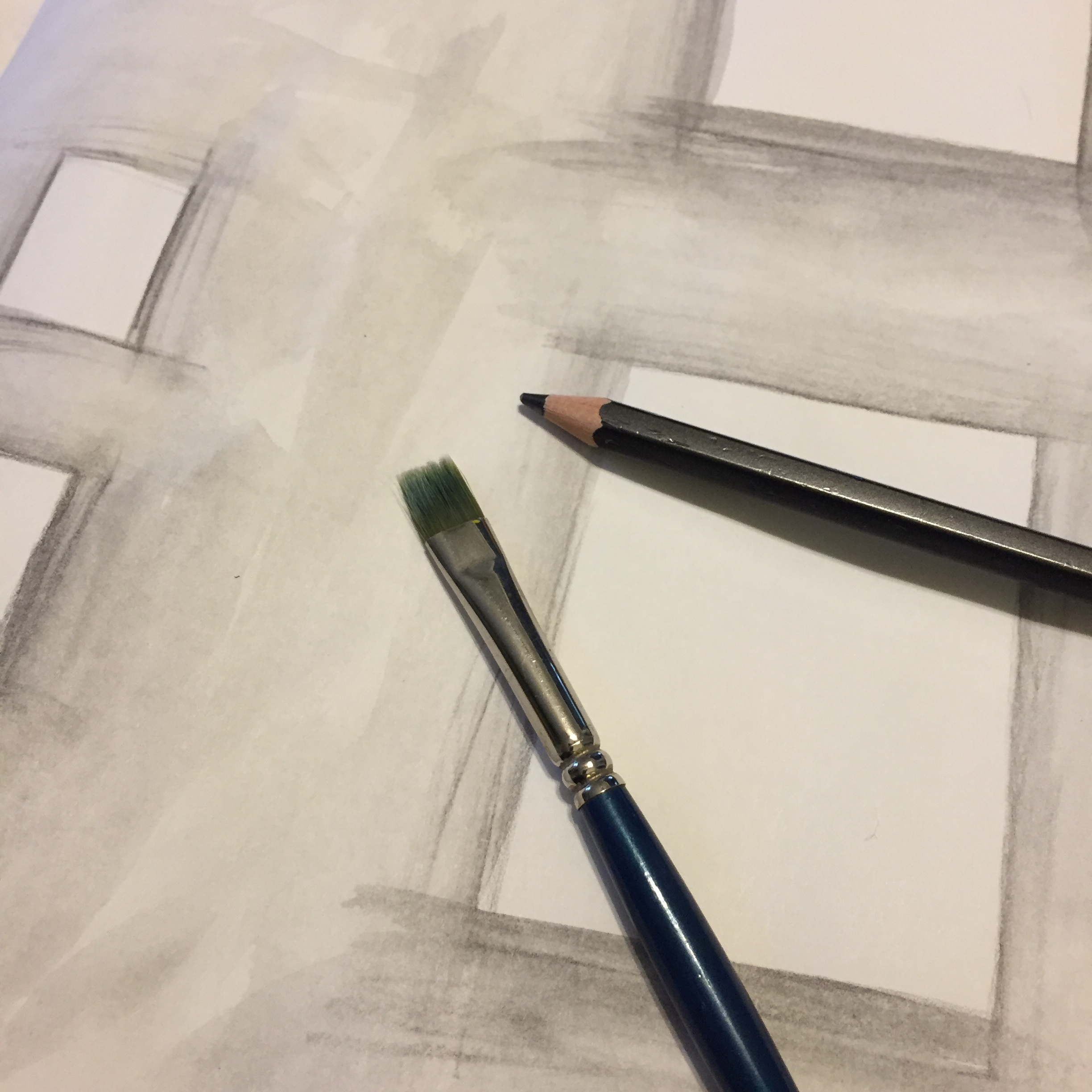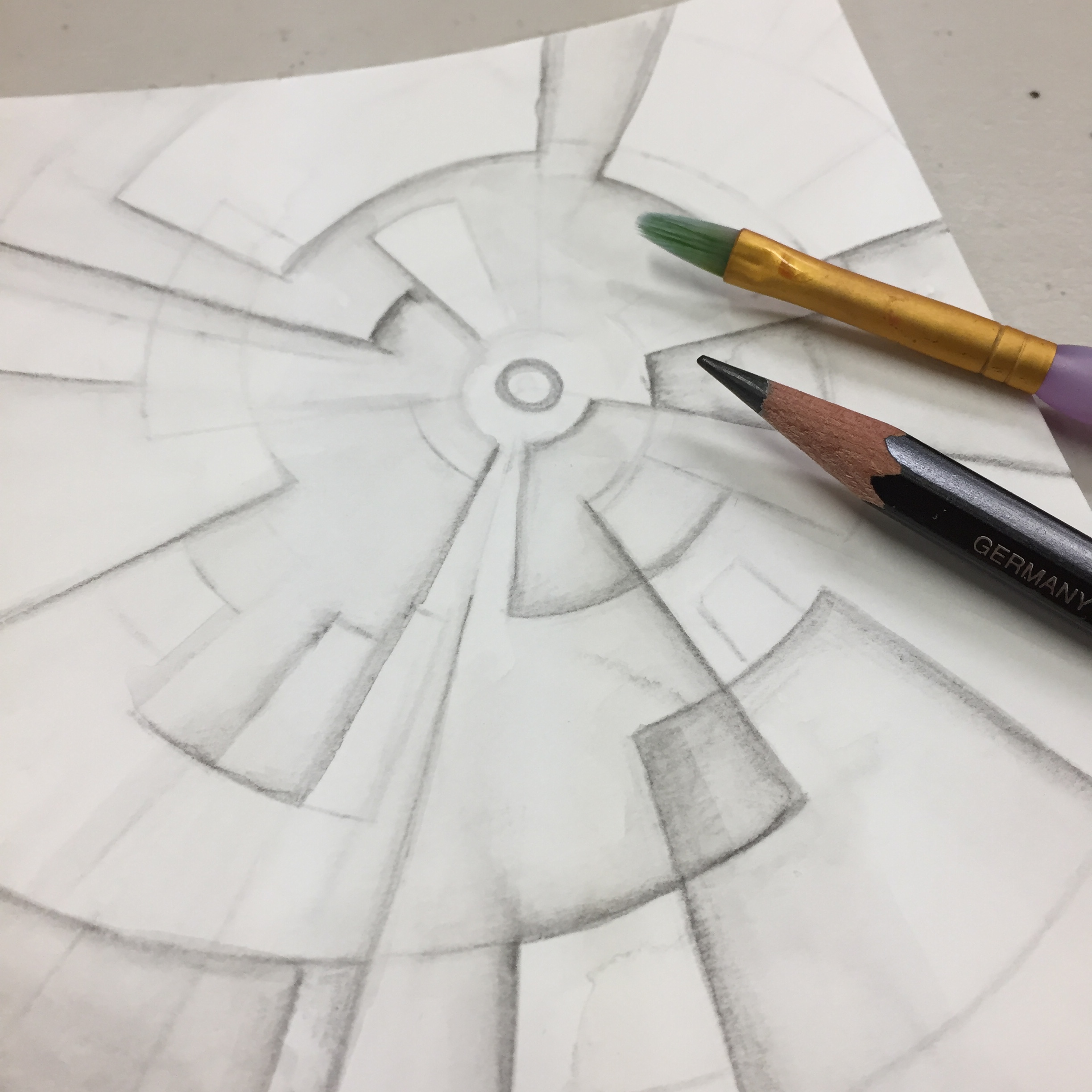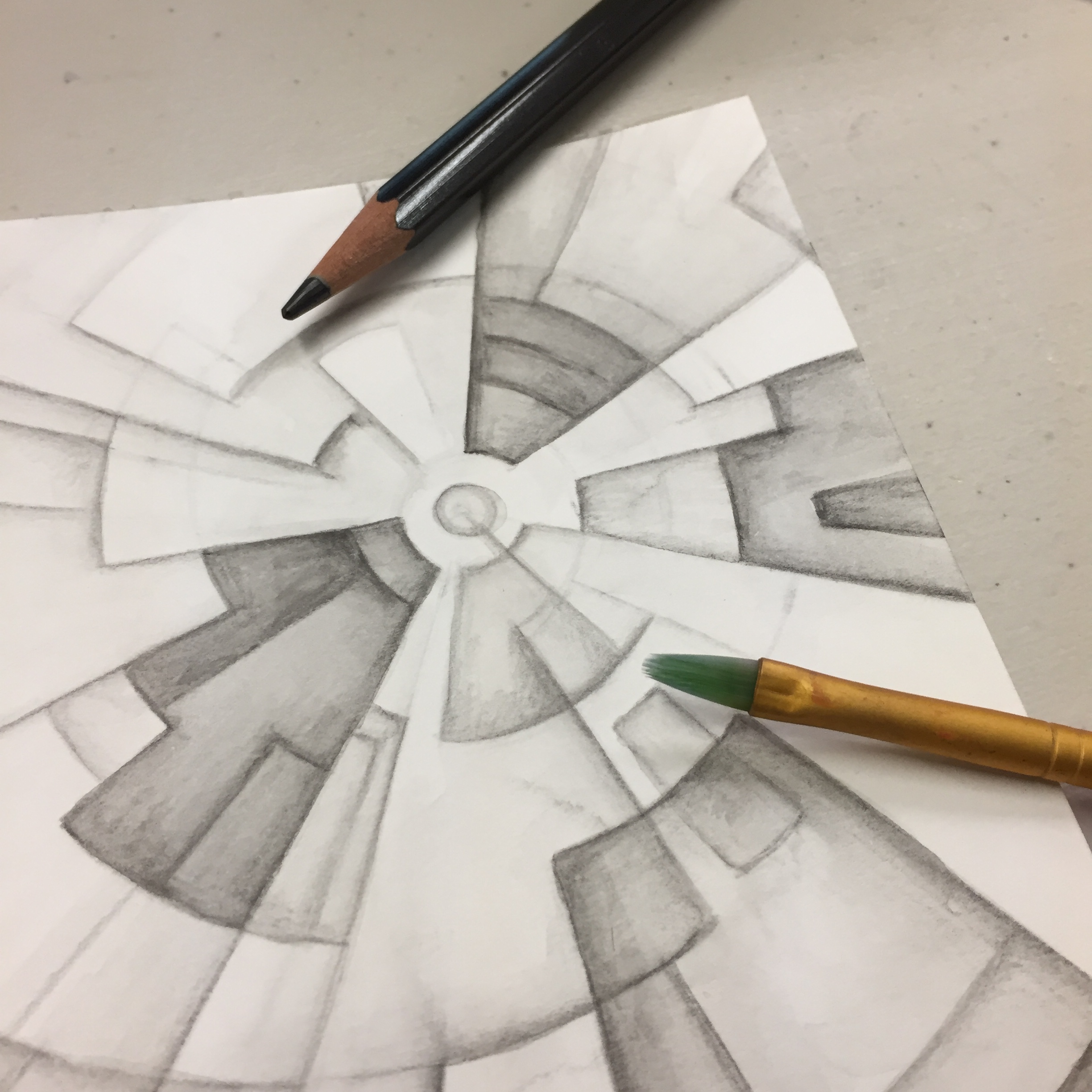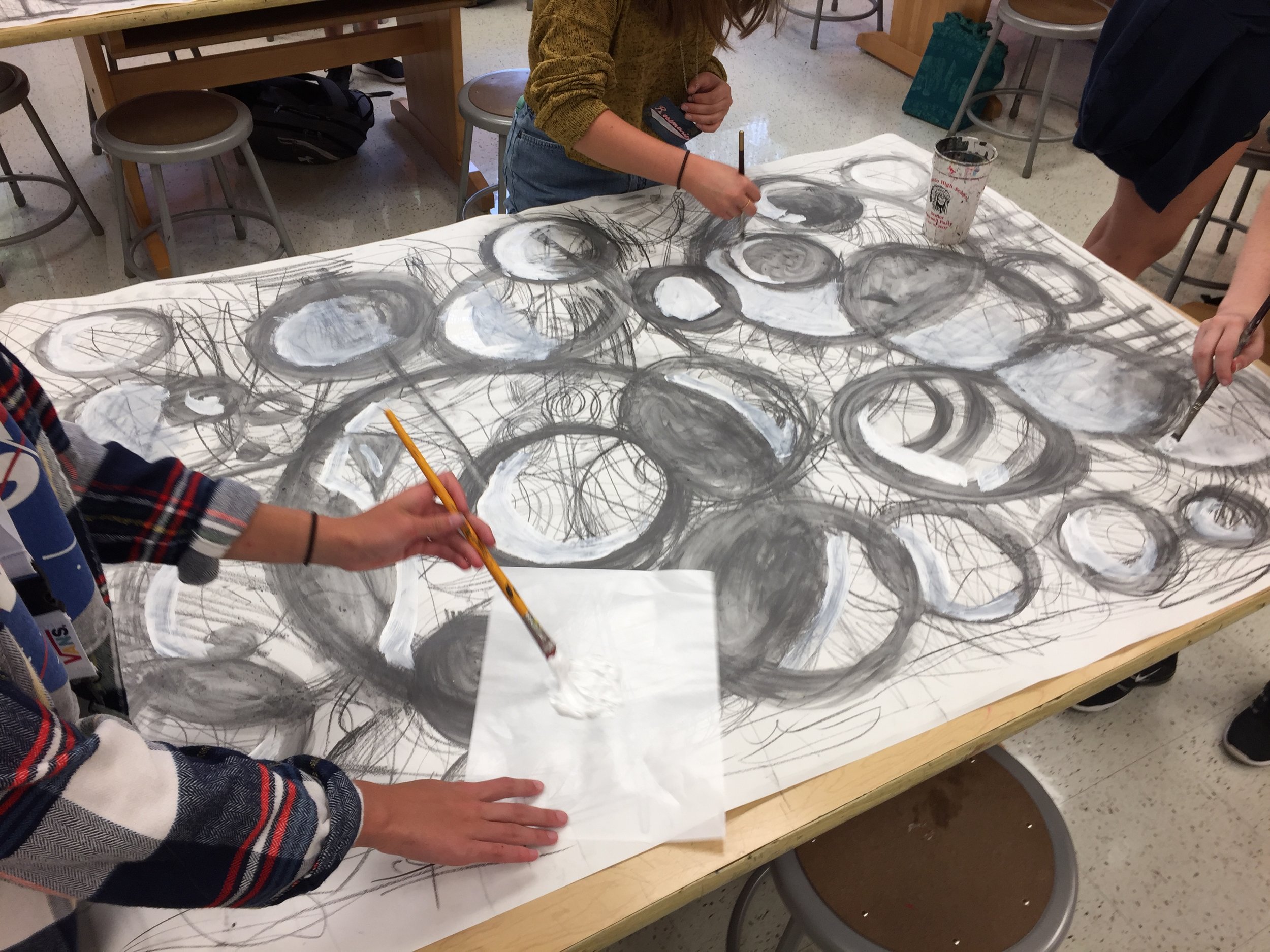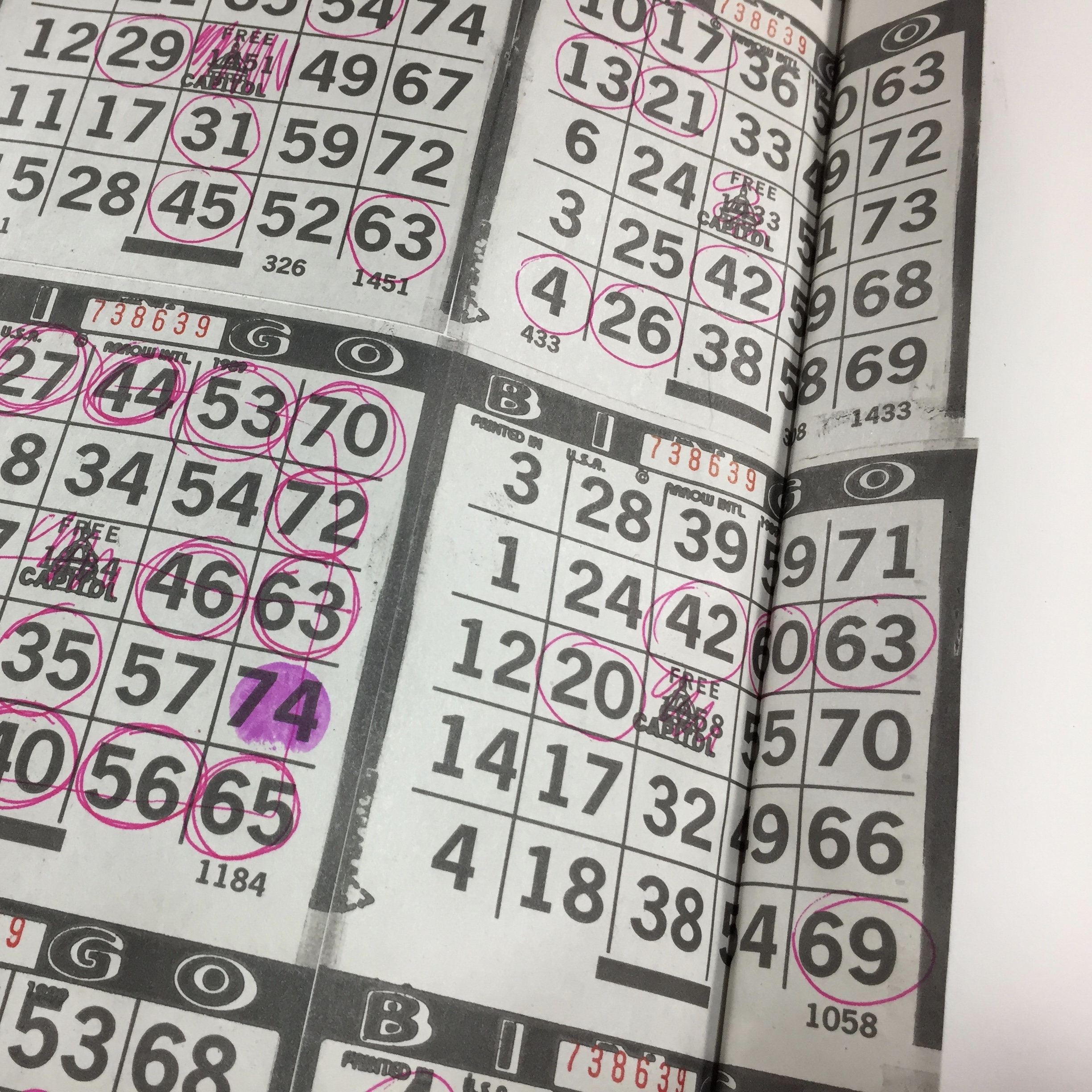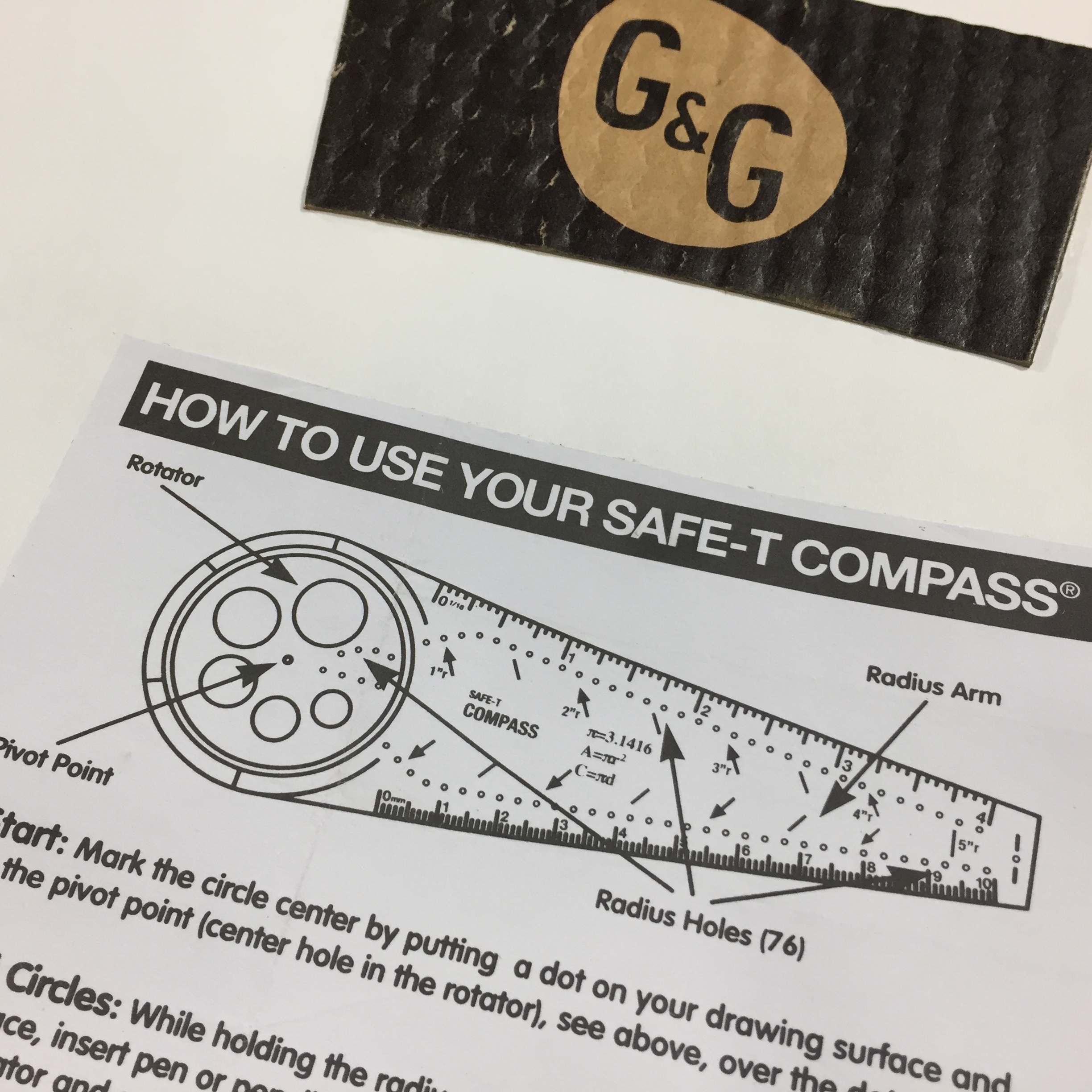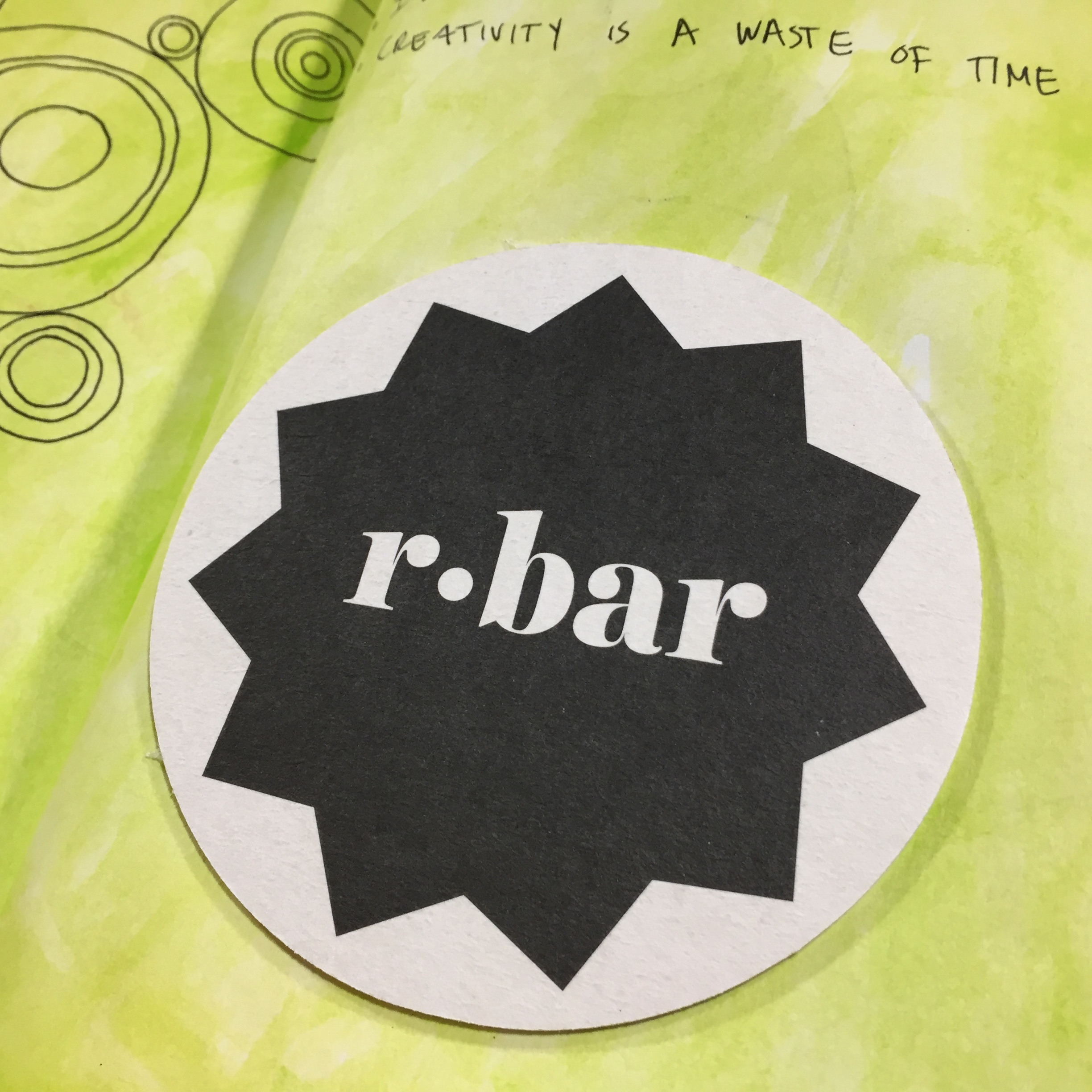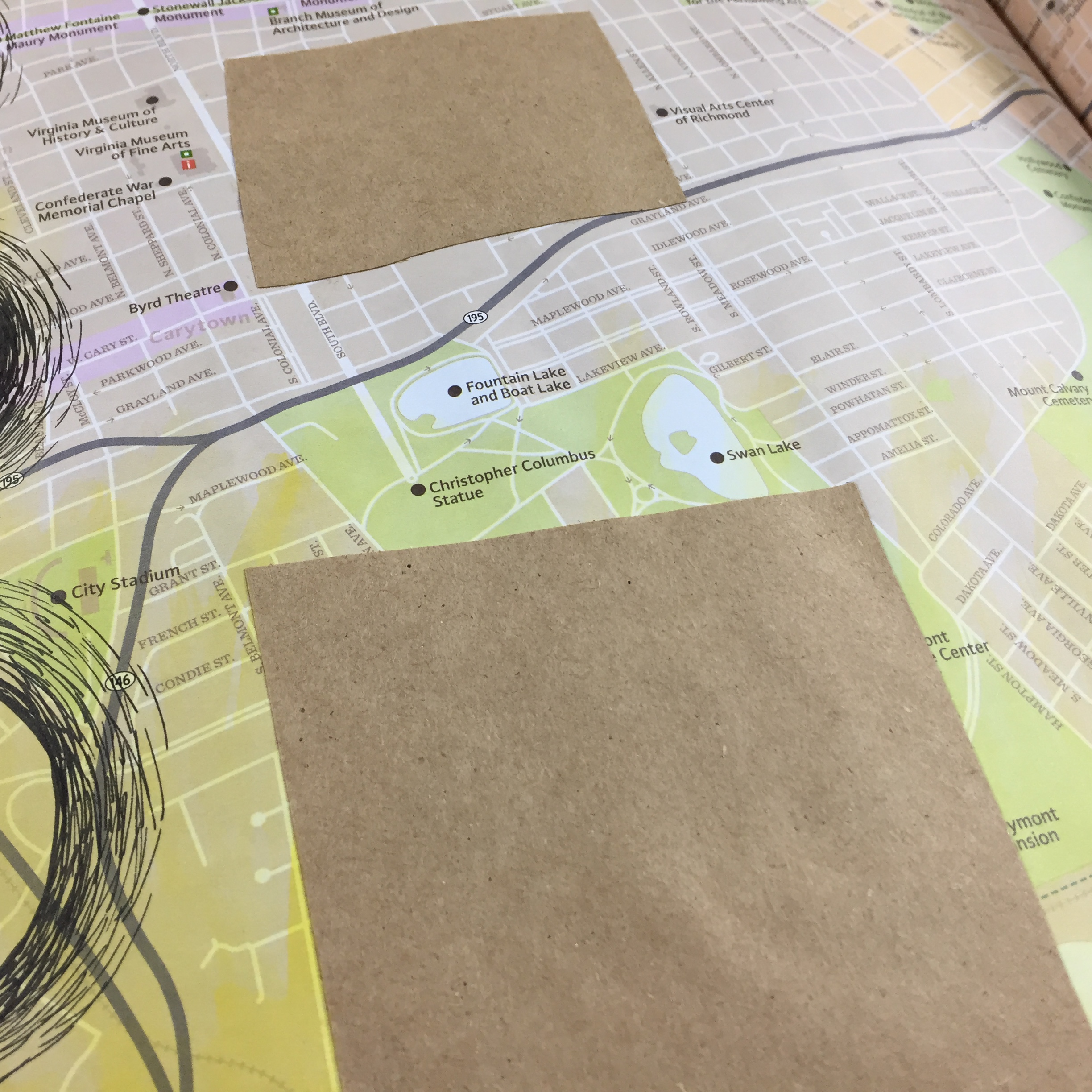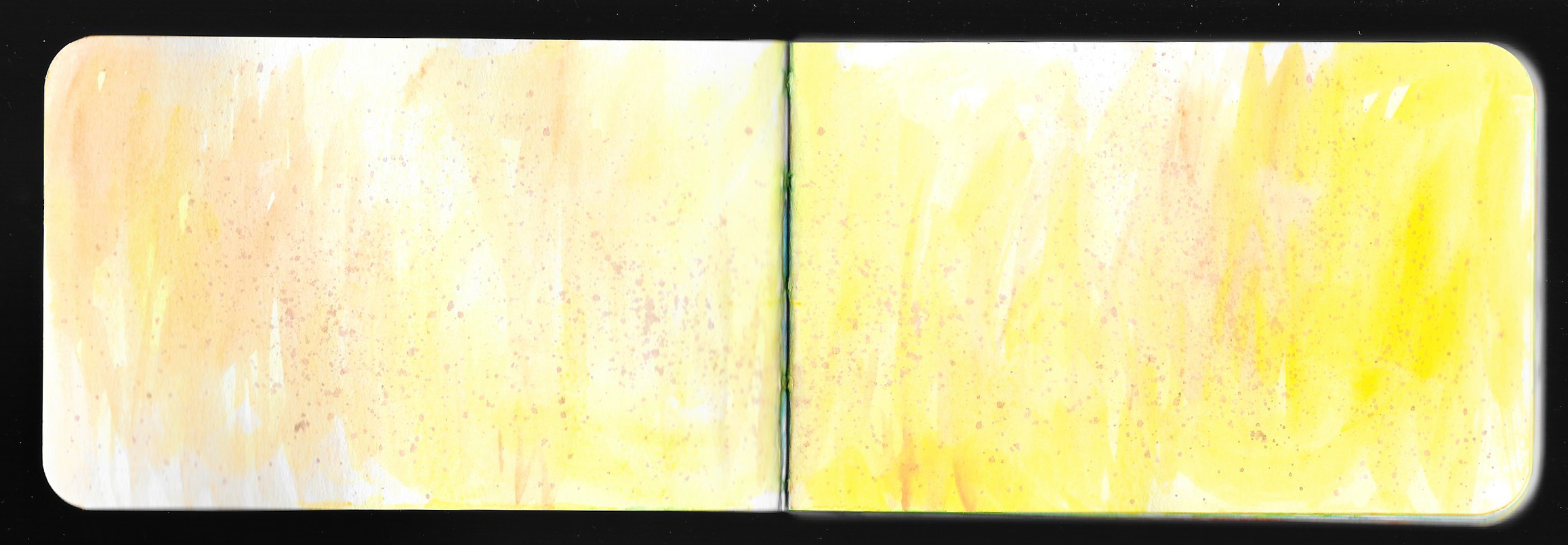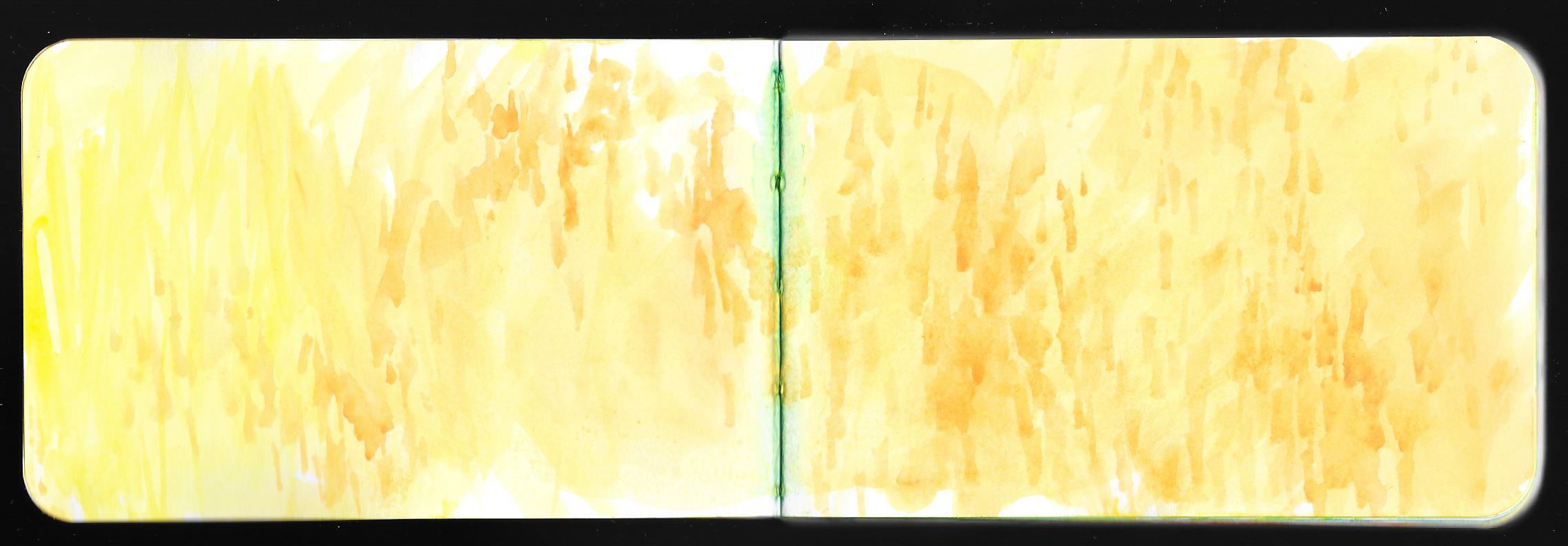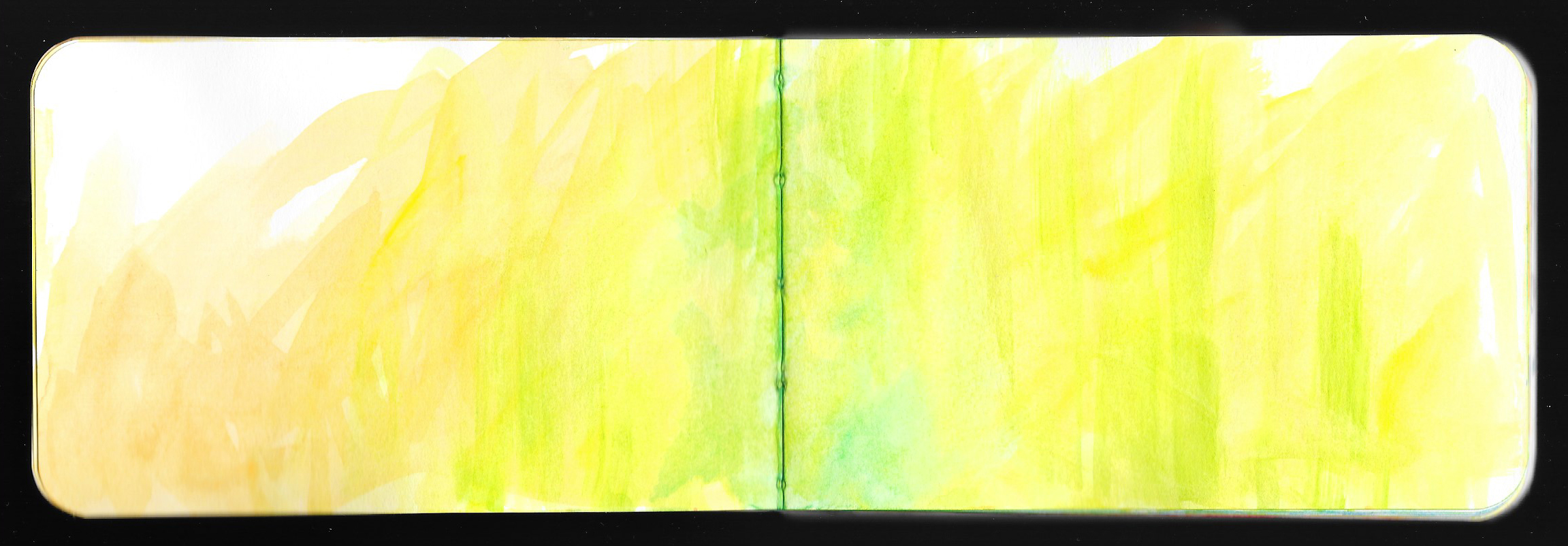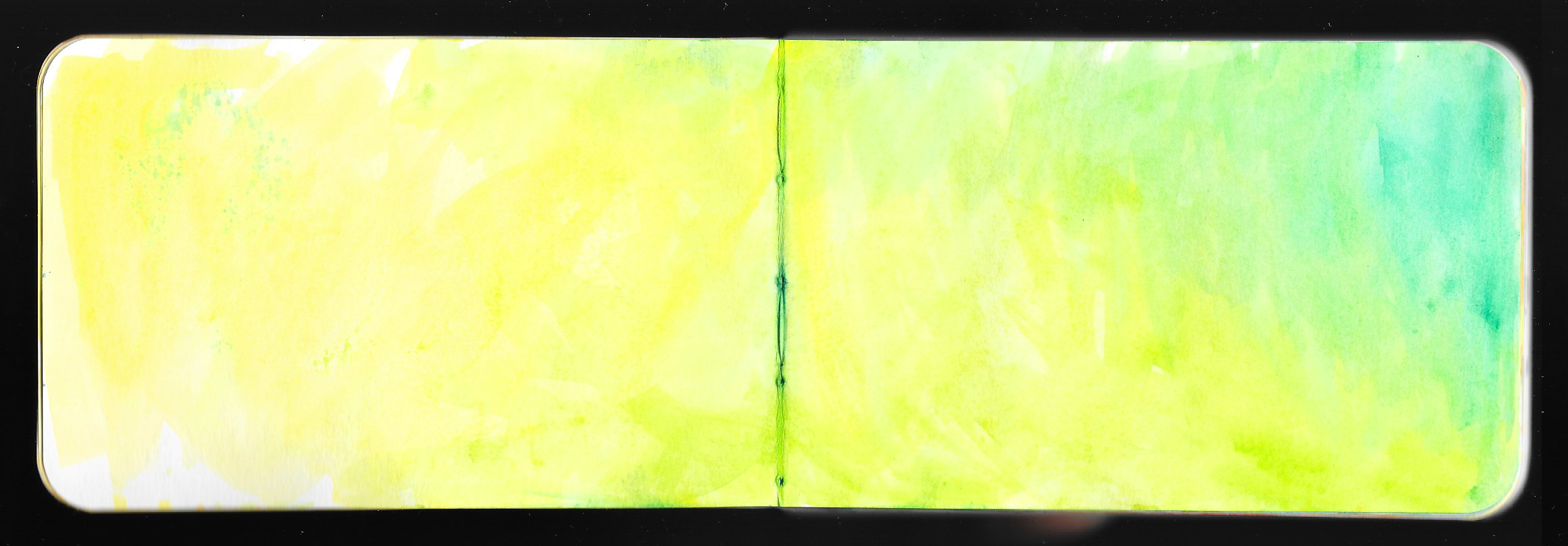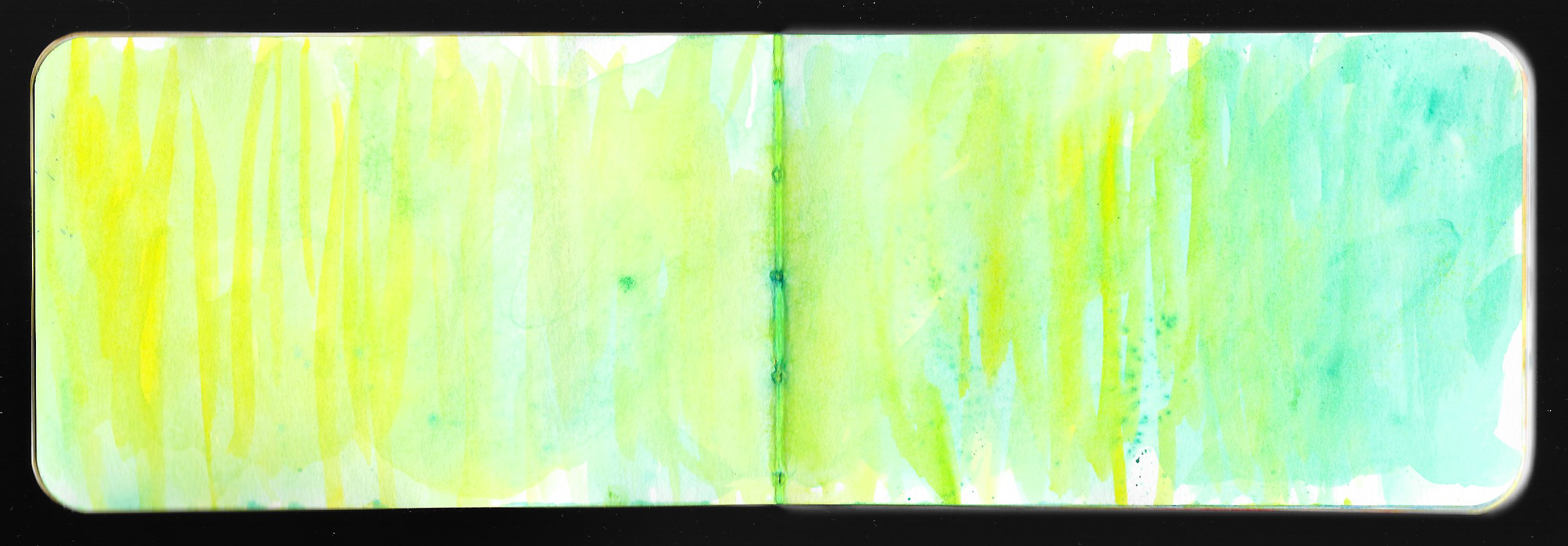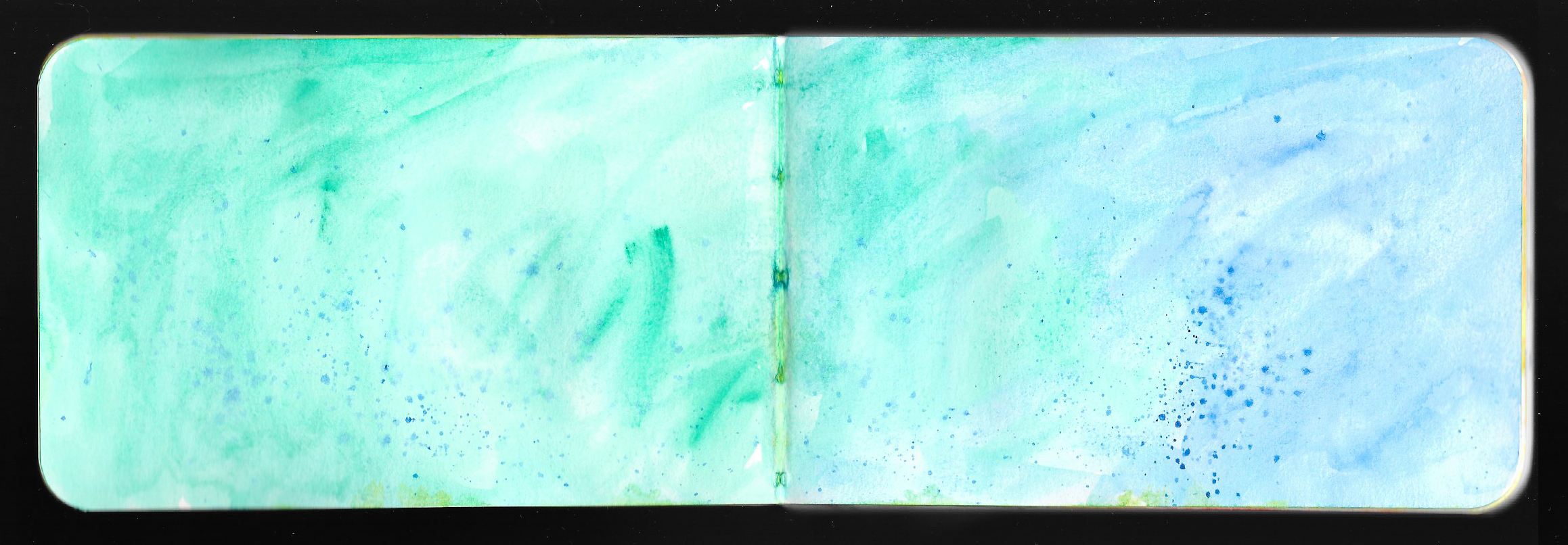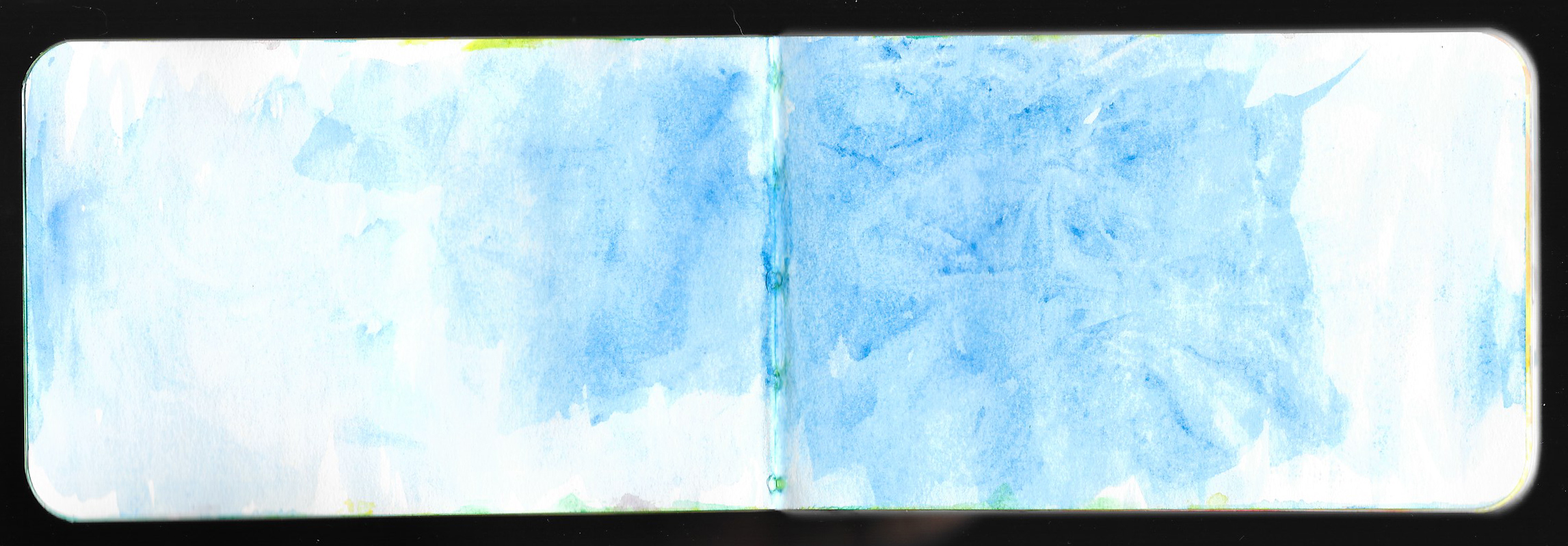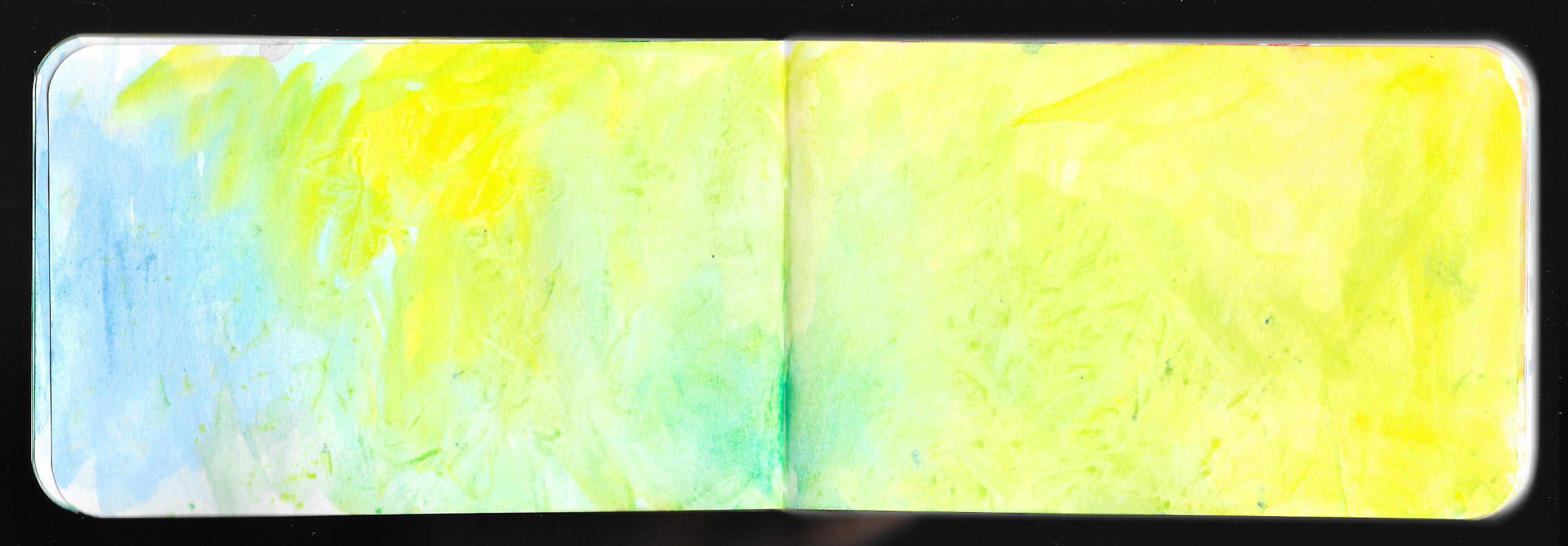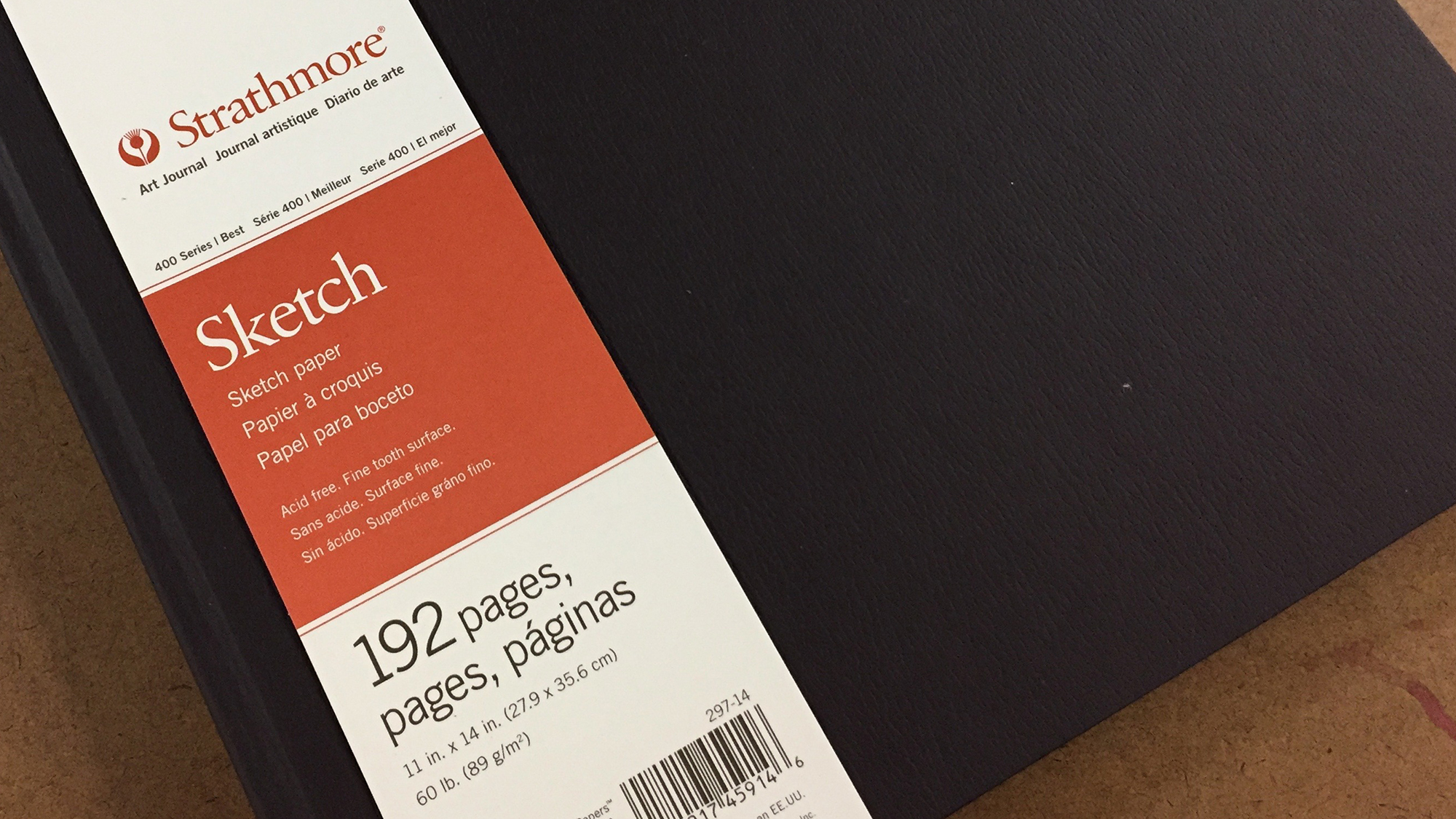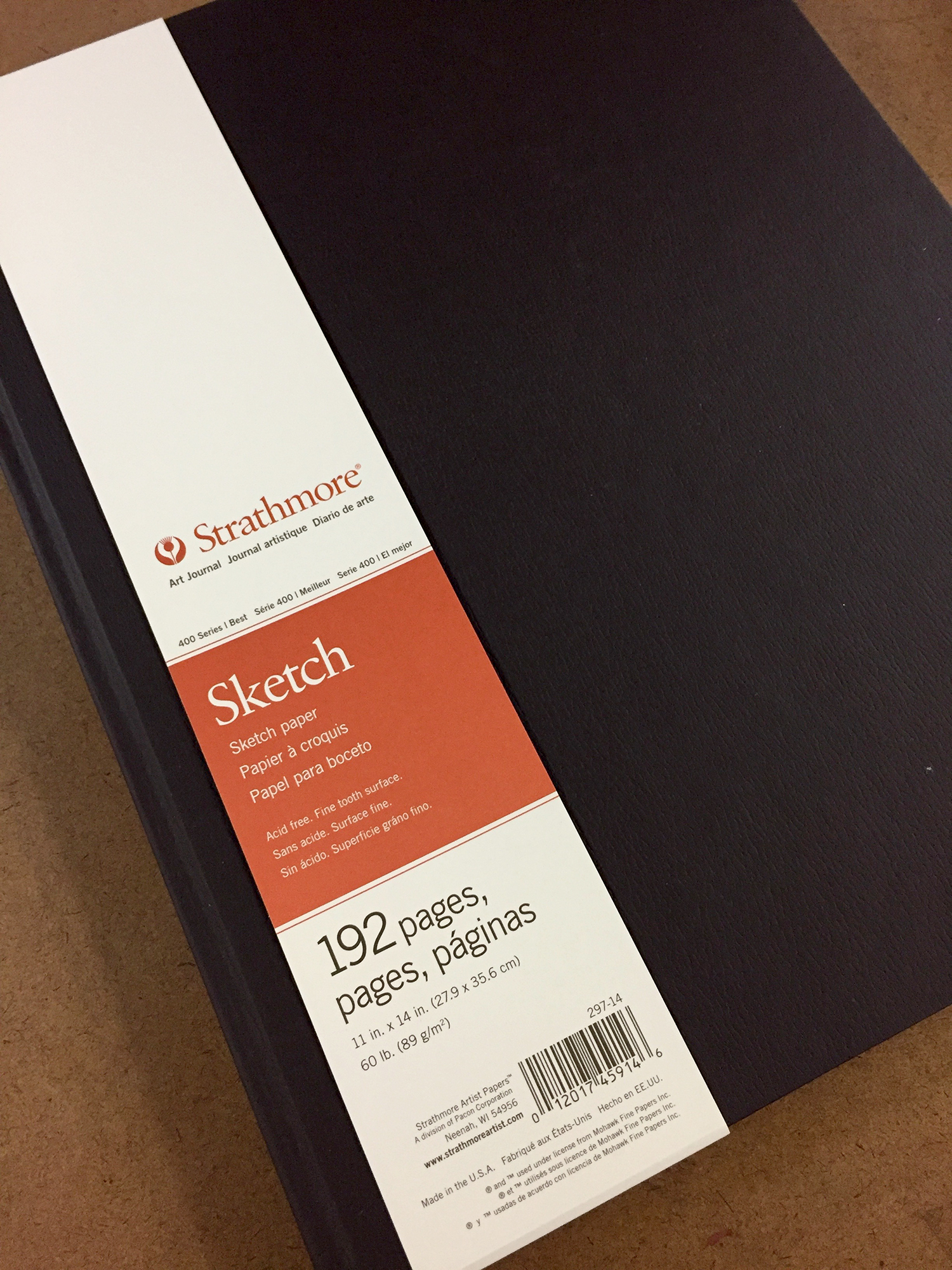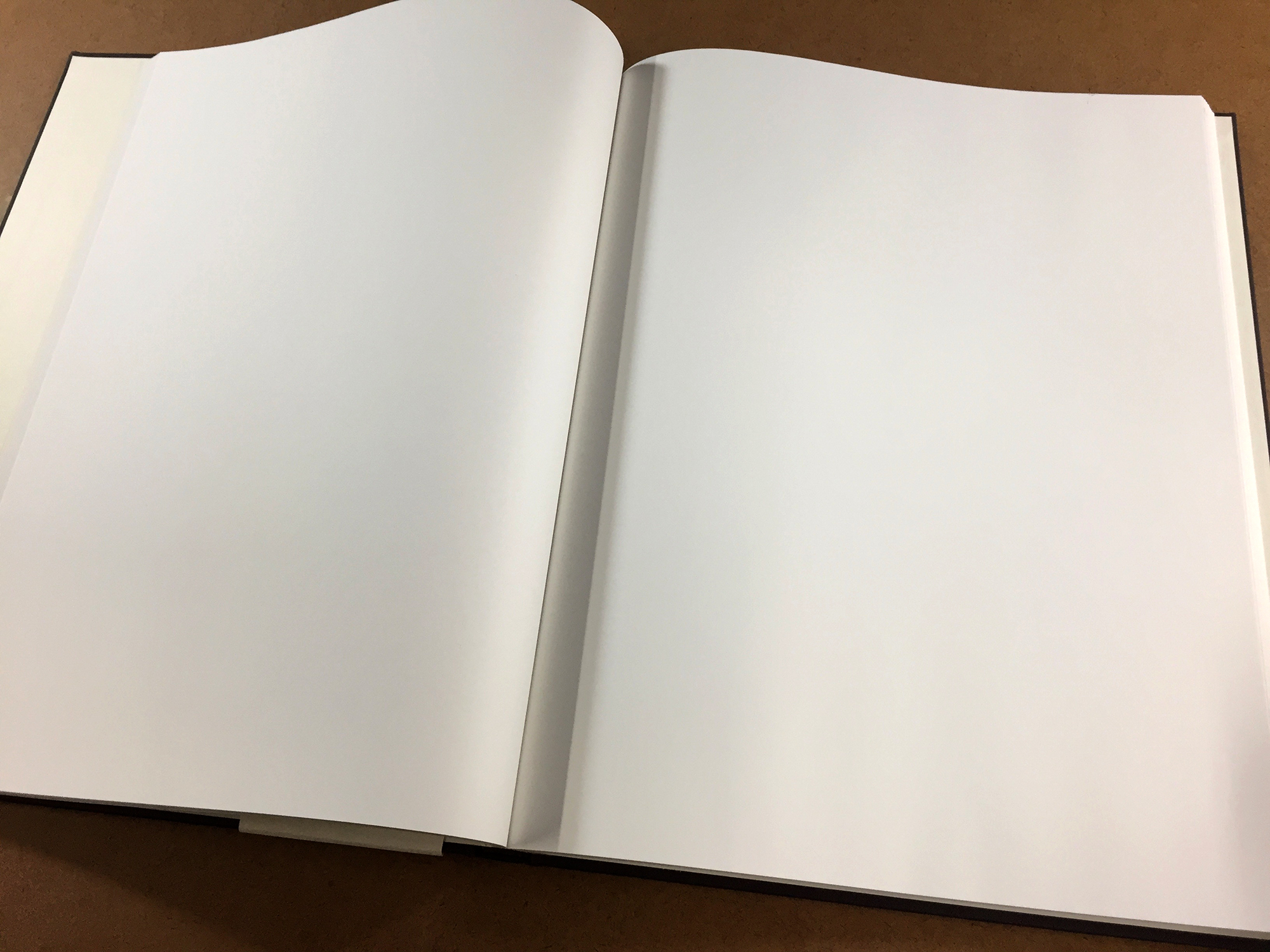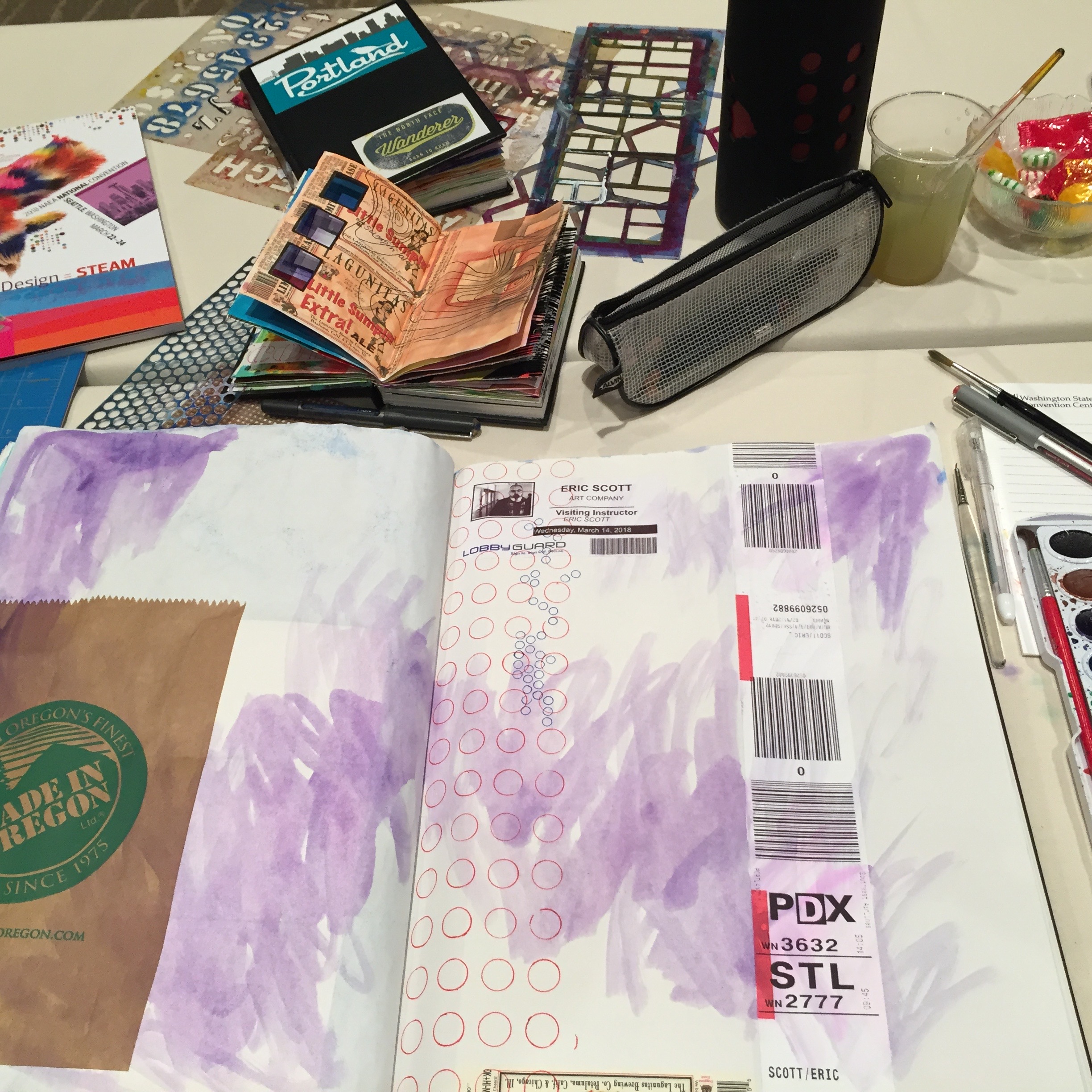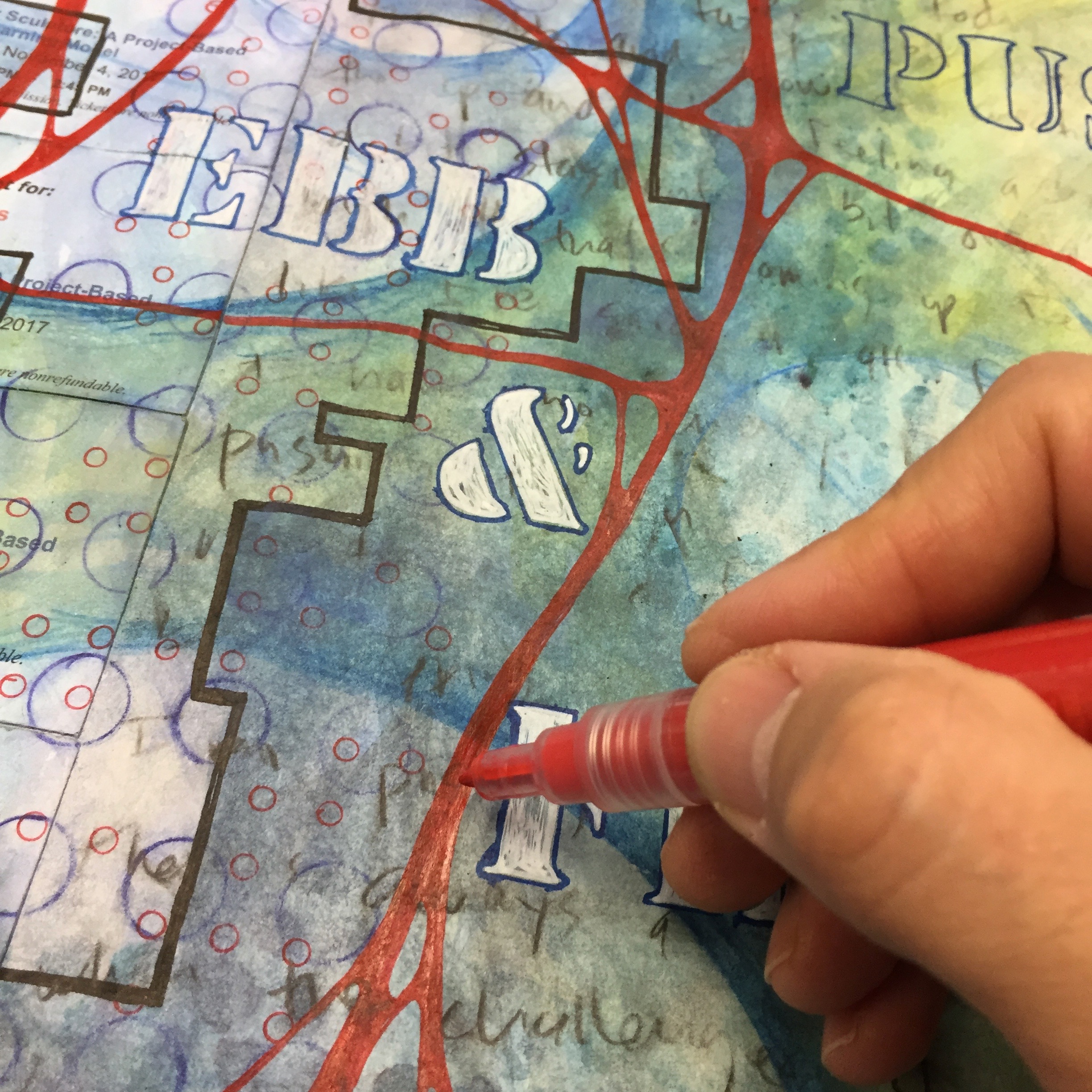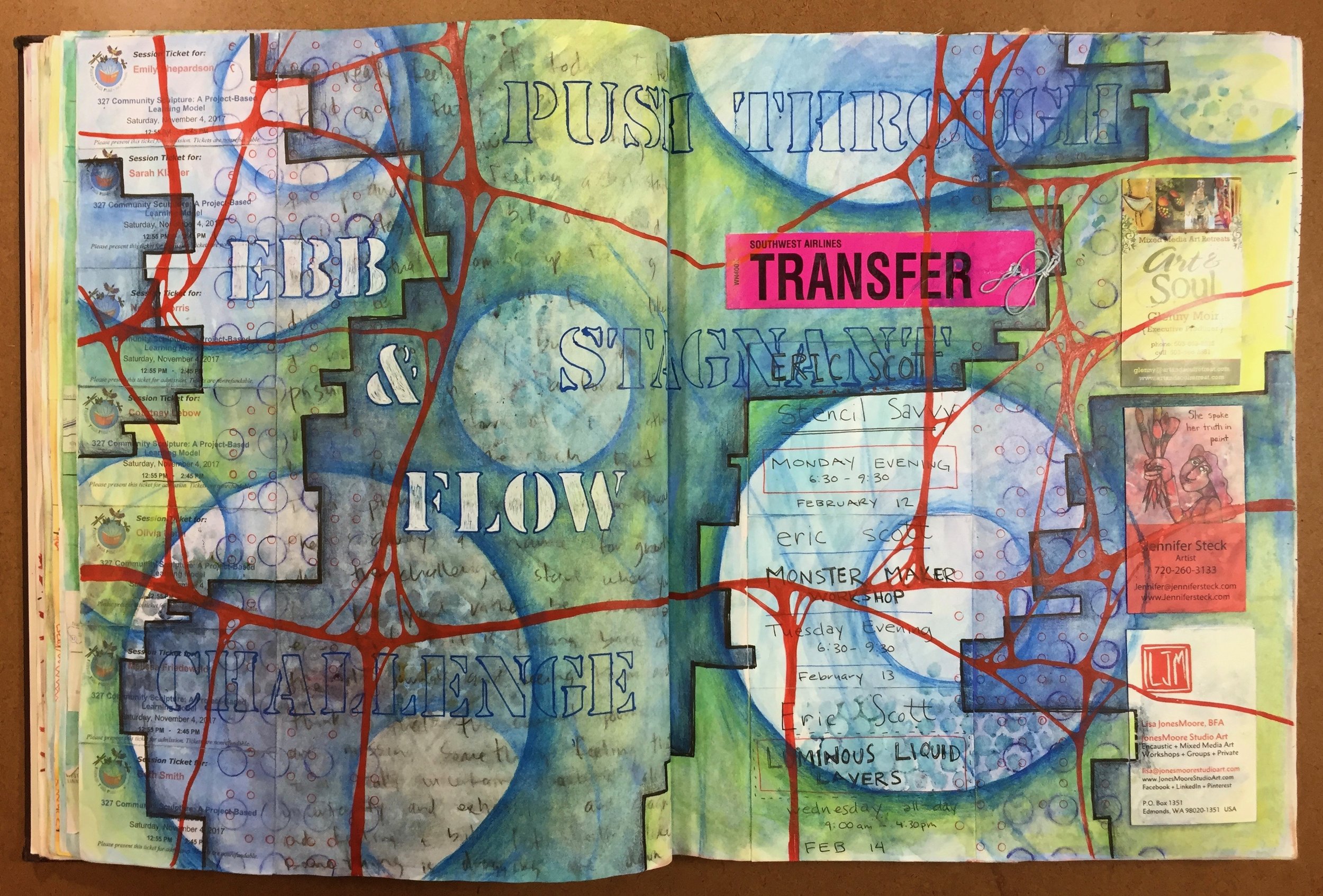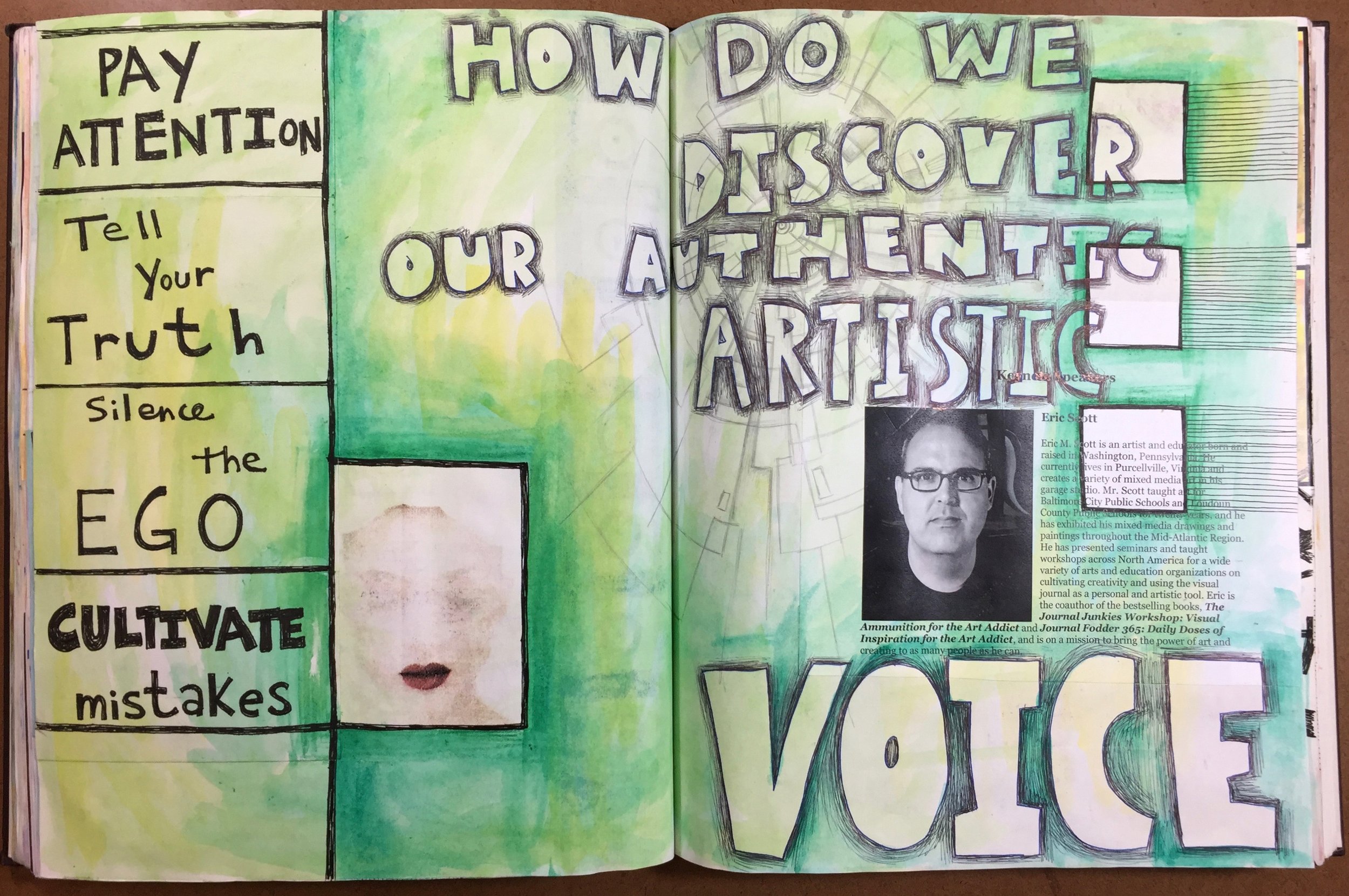Metallic markers and pens are a wonderful addition to any mixed media tool bag, and I feel that they’re pretty essential to the visual journal. Who doesn’t love adding some sparkling flair to their work?
I’ve used metallic ink for a long time to bring emphasis and focus to my journal pages, and it’s ideal for highlighting words, lines, and shapes. Over the years, I’ve used a lot of different metallic markers and pens, and some I’ve loved and some I’ve loathed. Even the best, though, can have problems of drying out, clogging up, and blobbing ink.
Over the past few years I’ve turned Metallic Sharpies. They’re relatively inexpensive, easy to find, and pretty reliable. Sharpie also makes metallic paint pens, but I’m talking about their metallic permanent markers. The ink isn’t as opaque and shiny as some others out there, and the markers won’t draw and write on top of every material, but they work on top of most materials that I use in the journal. They’re great for adding embellishments and a little bit of extra pop to elements on a journal page, and I always have a few in the studio and few in my travel art kit. I do find that they stand out more, if you draw or write on a dark surface, or if you outline the marker with a black pen.
One really nice thing about the Metallic Sharpies is that they are less messy then many other metallic pens and markers, especially paint markers. There’s nothing like trying to get a paint marker’s paint to flow and ending up with a huge, unwanted blob of paint on your page. There’s no worry about that with the Sharpie since it’s a plain, permanent marker with metallic ink — no shaking, no pressing down the tip to get the ink to flow. Another plus is that the metallic Sharpies come in three distinct colors — gold, silver, and bronze, and you can often find them in a convenient 3-pack. I did notice that Sharpie has three new metallic colors, as well — sapphire, ruby, and emerald, but I haven’t tried them.
There is one major drawback with the Metallic Sharpies. They must be stored with the tip down, and I’m thinking that this has something to do with the metallic ink inside. I’ve had some metallic Sharpies that were just kicking around inside my bag all willy-nilly, and after a while, they just don’t write or draw well. They’re just not very metallic, and the ink appears clear. I think that this is an issue of the ink separating inside the marker, and storing them tip down, makes this less likely. Also, there is a little bit of bleed through with these markers, but not like with regular sharpies. Any bleed through is nominal, and it’s something that I can live with. I don’t know how well they would hold up on stand alone work, but overall, I like using these Sharpies in my journal.
If your looking for an inexpensive, yet effective metallic marker to add to your stash, I recommend the Metallic Sharpies — just make certain to store them with the tip down!
